Unconventional oil and gas policy: SEA
Environmental report for the strategic environmental assessment (SEA) of our preferred policy position on unconventional oil and gas in Scotland.
Appendix 1: Baseline information
Introduction
Baseline information provides a benchmark against which the environmental effects of a policy or plan can be assessed.
Schedule 3 of the Environmental Assessment (Scotland) Act 2005 requires the following information to be provided when undertaking and SEA:
(1) An outline of the contents and main objectives of the plan or programme, and of its relationship (if any) with other qualifying plans and programmes.
(2) The relevant aspects of the current state of the environment and the likely evolution thereof without implementation of the plan.
(3) The environmental characteristics of areas likely to be significantly affected.
(4) Any existing environmental problems which are relevant to the plan including, in particular, those relating to any areas of a particular environmental importance, such as areas designated pursuant to Directives 79/409/EEC on the conservation of wild birds and Council Directive 92/43/EEC on the conservation of natural habitats and wild flora and fauna (as last amended by Council Directive 97/63/EC).
(5) The environmental protection objectives, established at international, Community or Member State level, which are relevant to the plan or programme and the way those objectives and any environmental considerations have been taken into account during its preparation.
The following text sets out the environmental baseline for the Environmental Report. The environmental baseline includes a description of the relevant policy framework, the current state in Scotland as well as an overview of key pressures, trends and environmental problems.
Biodiversity, flora and fauna
Significant work has been undertaken at the international, European and national level to tackle the issues affecting biodiversity, flora and fauna.
Most notable are the Aichi Targets for 2020[319]. The Aichi Targets are a product of the 10th Conference of Parties (COP) to the UN Convention on Biological Diversity[320] held in Nagoya, Japan, in 2010. The twenty Aichi Targets relate to various aspects of biodiversity conservation, such as reducing direct pressures on biodiversity assets and raising awareness of key drivers behind biodiversity loss. In addition, they underpin the Strategic Plan for Biodiversity 2011-2020[321] which provides an international overarching framework on biodiversity. Parties agreed to translate this overarching framework into updated national biodiversity strategies and action plans[322].
The EU Biodiversity Strategy to 2020[323] was launched to adopt the Strategic Plan for Biodiversity 2011-2020, including the twenty Aichi Targets. There are additional European Directives in place to protect Europe’s biodiversity and habitats. The Habitats Directive (92/43/EEC)[324] and the Birds Directive (2009/147/EC)[325] set out legislation to create protected areas and promote the conservation of outstanding natural habitats, wildlife and landscape features. Natura 2000[326] is a primary vehicle for achieving the collective aims of these Directives. It is an ecological network of protected areas developed under the Birds Directive and Habitats Directive – covering over 18% of the EU’s land area and almost 6% of its marine territory.
At the national level, the UK Post-2010 Biodiversity Framework[327] was a response to the publication of the Strategic Plan for Biodiversity 2011-2020 and the Aichi Targets, and the launch of the EU Biodiversity Strategy to 2020. The Scottish Government has also published a strategic document, 2020 Challenge for Scotland’s Biodiversity[328], which defines the measures needed to meet the international Aichi Biodiversity Targets[329]. It also supplements the 2004 Scotland’s Biodiversity: It’s in Your Hands[330]. The two documents together comprise the Scottish Biodiversity Strategy. In 2015, the Scottish Government published Scotland’s Biodiversity Route Map to 2020[331] which sets out the priority work needed to meet the targets of the 2020 Challenge for Scotland’s Biodiversity.
Current state
Scotland’s natural environment is diverse. This is reflected in the number and variety of designated biodiversity areas located across Scotland.
There are 252 Special Areas of Conservation (SACs), 153 Special Protection Areas (SPAs) and 51 Ramsar sites in Scotland[332]. Scotland also contains 1,423 Sites of Special Scientific Interest (SSSIs), covering 1,022,000 hectares which amounts to about 13% of Scotland’s land area. The sites range in size from the very small, such as Bo’mains Meadow SSSI at just under one hectare, to the vast Cairngorms SSSI which extends to more than 29,000 hectares.
In addition, Scotland’s rivers, lochs and wetlands support many important habitats and species. Scotland has more than 30,000 freshwater lochs, ranging from small lochs to the likes of Loch Ness. The conditions in Scotland’s lochs greatly vary from soft, relatively acidic water to hard waters with higher alkaline and nutrient concentrations – providing a wide variety of aquatic habitats[333].
Following from the above, the key characteristics of Scotland’s natural environment are listed below.
- Scotland’s coastal environment provides vast and diverse habitats for internationally important seabirds and shorebirds[334].
- Key terrestrial habitats present in Scotland include upland areas stretching over 50% of Scotland’s land area[335], followed by blanket bog covering another 23%. Blanket bog has been classified as globally rare and endemic to Scotland[336].
- Although forests cover about 17% of Scotland’s land area, they support a high share of Scotland’s biodiversity[337] – particularly native, ancient and semi-natural woodlands which are likely to have a higher biodiversity value than more uniform planted woods[338].
Scotland’s central belt contains diverse natural environments which support a rich array of flora and fauna species, including (but not limited to) the following major biodiversity assets;
- The Firth of Forth is a complex of estuarine and coastal habitats in south east Scotland, stretching for over 100km from the River Forth at Stirling eastwards past Edinburgh and along the coasts of Fife and East Lothian to a wide estuary mouth. The floodplains of the Inner Firth contain a range of riverine features such as tidal banks, rare saltmarsh habitat and extensive areas of mudflats. The shoreline of the Outer Firth includes sandy shores, some rocky outcrops, mussel beds and some artificial seawalls. In addition, the coast of North Berwick contains cliffs and dune grasslands, with extensive dune systems at Aberlady[339]. The Firth of Forth is home to internationally important numbers of wintering waders such as the oystercatcher, knot and bar-tailed godwit[340]. As such the Firth of Forth is designated as a Special Protection Area (SPA)[341] under the European Birds Directive .
- Raised bogs are widespread throughout the UK, but there are notable concentrations in the Central Belt of Scotland. The Central Belt of Scotland contains several protected lowland moss areas such as the Flanders Mosses, which have been designated as a Special Area of Conservation (SAC)[342]. Therefore, new development in the Central Belt in particular could have the potential to adversely impact upon the integrity of lowland moss habitats.
- The Galloway and Southern Ayrshire Biosphere is a major bio-geographic region which is partially located in the Midland Valley, covering 526,888 ha in total with a core area of 10,658 ha. The Biosphere is represented by upland massif centred on the Merrick and the rivers that flow from this upland down to the sea. Moreover, the Biosphere contains two predominant topographic regions: rolling uplands and lowlands of gently undulating topography with incised river valleys[343].
Existing pressures
Land-use change and intensive land use are key drivers of biodiversity loss and ecosystem degradation.
- New development has the potential to adversely impact upon local biodiversity through habitat damage, habitat loss, disturbance to species[344], water pollution[345], increased recreation pressures[346], changes to hydrological regimes that are of particular relevance to wetlands[347], among other negative impacts.
- The conversion of semi-natural habitats has had adverse impacts on biodiversity and ecosystems. Bogs significantly decreased over the period between 1947 and 1988 – with a decrease of around 21% in blanket bog and a decrease of around 44% in lowland bog. Semi-natural woodlands decreased by 28%, followed by heather moorland which saw a decrease in 23% over that period. Moreover, just over half of Scotland’s hedgerows (equalling to about 40,000 kilometres) were lost over the same period. The rate of habitat change has slowed over the last 30 years, but the pressures from land use change are still causing biodiversity loss and ecosystem degradation across Scotland[348].
- Agricultural development is a key driver in habitat loss and habitat degradation. Farming constitutes major land-use in Scotland with about 75% of the land area devoted to agriculture. However, each type of farming has different effects on biodiversity. For example, hill farming is known to benefit biodiversity whilst dairy and meat production is linked to negative impacts on biodiversity[349]. Nevertheless, farming can also potentially benefit biodiversity as hedgerows support habitat corridors, connect habitats and promote species mobility[350].
Potential pressures associated with unconventional oil and gas development
Current scientific evidence has identified a number of potential pressures on biodiversity associated with unconventional oil and gas development.
- Traffic movements, fencing and road construction could cause habitat fragmentation. For instance, aboveground pipes could bisect important biodiversity corridors[351].
- Increases in environmental noise associated with site activity could lead to species disturbance, particularly in areas with low background noise levels. Flaring may also constitute a source of noise pollution and disturbance[352].
- Fugitive air emissions could indirectly affect local biodiversity, primarily through increased emissions of greenhouse gases. Fugitive air emissions arise from unintentional leaks, venting and flaring. These include greenhouse gases such as carbon dioxide (CO2) and methane (CH4). Fugitive methane emissions are a concern given that methane is a potent greenhouse gas, which could exacerbate climate change impacts on local biodiversity[353].
- Dewatering processes associated with Coal Bed Methane (CBM) operations require significant amounts of water, which in turn could have the potential to adversely impact upon biodiversity, flora and fauna. Reduced water levels could have adverse hydro-ecological impacts, and surface water and groundwater abstraction could lead to the intrusion of saline water into waterbodies. Furthermore, buried linking infrastructure used in unconventional oil and gas developments could induce changes in surface flows and groundwater levels, which could adversely impact upon hydro-ecological functioning[354].
- The accidental release of hazardous materials during transportation could have harmful effects on local biodiversity given the toxic nature of most substances used in hydraulic fracturing fluid[355].
- Light pollution, like noise pollution, could result in species disturbance. Light pollution is caused by flaring or by lighting for safe working, particularly during the drilling phase[356].
- A finding by New York State DEC highlights the potential effects on biodiversity arising from the introduction of invasive species associated with industrial activity[357].
It needs to be noted that the aforementioned effects are included regardless of their significance.
Population and Human Health
Public health is the subject of a variety of policies and statutes, either directly or indirectly.
Many of these focus on preventing or limiting exposure to air pollutants. At the European level are various directives that address air quality issues. The Ambient Air Quality Directive (2008/50/EC)[358] sets legally binding limits for concentrations of major air pollutants such as particulate matter (PM10, PM2.5) and nitrogen oxide (NO2). Directive 2008/50/EC is transposed into Scots law through the Air Quality Standards (Scotland) Regulations 2010[359]. Separate emissions limits for SO2, NOx, NH3 and volatile organic compounds are set in European law under the National Emission Ceilings Directive (2001/81/EC)[360], which was subsequently made into UK law as the National Emissions Ceilings Regulations 2002[361]. Specific legislation on integrated prevention and control of pollution arising from industrial activities is entrenched in the Industrial Emissions Directive (2010/75/EU)[362], which has been implemented as the Pollution Prevention and Control (Scotland) Regulations 2012[363]. Other relevant legislation includes the Environment Act 1995[364]. Under Section 83(1) of the Environment Act 1995, local authorities have a duty to declare Air Quality Management Areas (AQMAs) at locations in which air quality objectives are not being met or are unlikely to be met.
Other policies and statutes aim to minimise the potential impacts of environmental nuisances such as noise pollution, light pollution and disturbance from vibration. Noise pollution is addressed through the EU Noise Directive (2000/14/EC)[365] and the Environmental Noise Directive (2002/49/EC)[366], which were made into UK and Scots law as the Noise Emissions in the Environment by Equipment for use Outdoors Regulations 2001 (as amended)[367] and the Environmental Noise (Scotland) Regulations 2006[368], respectively. Furthermore, the Public Health etc. (Scotland) Act 2008[369] also makes provision for law on statutory nuisances such as artificial light nuisances.
There is also legislation in place to prevent and control any adverse health effects arising from the contamination of water resources. At the European level, these are entrenched in both the Bathing Water Quality Directive (2006/7/EC)[370] and the Drinking Water Directive (98/83/EC)[371] at the European level. The Bathing Water Quality Directive (2006/7/EC) has been transposed through the Bathing Waters (Scotland) Regulations 2008 (as amended)[372] and the Bathing Waters (Sampling & Analysis) (Scotland) Directions 2008[373]. The Water Supply (Water Quality) (Scotland) 2001[374] and the Water Quality (Scotland) Regulations 2010[375] regulations transpose the Drinking Water Directive.
A range of policies and statutes is in place to prevent and control health hazards associated with unconventional oil and gas operations, such as the physical health risks associated with respirable crystalline silica. At the European level are the Sevoso Directive III (2012/18/EU)[376] which lays down rules for the prevention of major accidents which involve dangerous substances, and the limitation of their consequences for human health and the environment as well as the Directive on the Registration, Evaluation, Authorisation and Restriction of Chemicals (REACH) (1907/2006/EC)[377] which was designed to improve the protection of human health from the risks that can be posed by chemicals used in various industrial activities. At the national level, the REACH Directive has been implemented as the REACH Enforcement Regulations 2008[378]. The COMAH Regulations 2015 implements the Seveso Directive. It sets out regulations to reduce to risks of potential major accident hazards that are associated with storing or handling large quantities of industrial chemicals of a hazardous nature. Other relevant legislation includes Reporting of Injuries, Diseases and Dangerous Occurrences Regulations 2013[379]. Under Section 20 of the 2013 Regulations, any unplanned release of fluids from a well in the UK must be reported.
Current state
According to the 2011 Census, the population in Scotland was estimated to be 5,295,000 people, of whom 2,728,000 (51.5%) are women and 2,567,000 (48.5%) men. This was a 4.6% rise compared to 2001, and the highest population recorded for the country since records began[380].
The mid-2016 population estimates[381] suggest that Scotland’s population is continuing to grow, with 5,404,700 residents recorded in the country as of June 2016. This was an increase of 0.6% compared to 2015. Although there has been a general trend for growth in Scotland as a whole, growth in population has been variable across different areas of the country over the report period. The cities of Edinburgh and Glasgow have seen the highest levels of population growth at 1.68% and 1.44%, respectively. Conversely, Inverclyde and Na h-Eileanan an Iar displayed losses of population equating to 0.63% and 0.43% over the same time, respectively. There is significant variation between the more densely populated areas in the Central Belt of Scotland and areas such as the Highlands and Western Isles.
In addition, there is a recent trend for an overall increase in the proportion of older people. Between 1996 and 2016, the age group which reported the highest percentage of growth was those aged 75 and over, with a reported increase of 31% over that period. Over the same period, the number of people aged 45-64 and aged 64-74 grew by 26% and 24%, respectively[382].
Use of the outdoors for access and recreation is an important contributor to health and wellbeing. Current work is underway to extend and improve the National Walking and Cycling Network (NWCN) which will build on existing path and trail networks, close key gaps, upgrade connecting routes, link to public transport and promote shared use of paths. This will increase opportunities for active travel and recreation and bring benefits for health and wellbeing in Scotland. Figures 6a and 6b, Appendix 1, show the distribution of national cycling and walking trails and country parks, and the number of routes and country parks within the area prospective for unconventional oil and gas development.
Data on visits to the outdoors shows 48.5% of adults visited the outdoors at least once a week in 2016, a similar proportion to 2015 where 48.6% of adults visited the outdoors at least once a week.[383]
The Health and Safety Executive (HSE) has published a list of case studies of industry-related major accidents in Scotland that occurred over the last few decades[384]. All of these case studies pre-date the implementation of the COMAH Regulations 2015.
The crucial role of environmental quality in maintaining human health is well-documented, particularly in relation to protecting water quality and air quality.
- Air pollution represents a significant threat to public health. Poor air quality is associated with a number of diseases and health problems such as lung cancer, strokes, asthma, dementia and cardiovascular disease. Across the UK, air pollution is estimated to cause 40,000 deaths per year. The high-risk groups most prone to the effects of poor air quality include infants, young children, the elderly and those with existing heart and lung conditions. Pregnant women are also considered to be a vulnerable group given that harmful particulates could potentially infiltrate the placenta via the bloodstream[385].
- The main pollutants of current concern in Scotland are oxides of nitrogen (NOx), particulate matter (PM10 and PM2.5), sulphur dioxide (SO2), non-methane volatile organic compounds (NMVOCs), ground level ozone (O3) and Ammonia (NH3)[386]. For instance, fine particular matter was associated with 2,000 premature deaths and around 22,500 lost life-years across the population in Scotland in 2010[387].
- Densely populated areas have relatively high elevated air pollution levels. There are currently 38 AQMAs declared across 15 local authorities in Scotland, many of which are located in the densely populated Midland Valley (City of Edinburgh, East Dunbartonshire, East Lothian, Falkirk, Fife, Glasgow, Midlothian, North Lanarkshire, South Lanarkshire and West Lothian)[388]. This is reflected in premature death rates across Scotland. For example, large Scottish cities have the highest proportion of total death associated with particulate (PM) pollution in Scotland, with 4.9% and 4.7% of deaths linked to particulate pollution in Edinburgh and Glasgow, respectively[389].
- Scotland’s water resources are important for commercial water supplies, including drinking water. According to the latest annual report (2016) by the Drinking Water Quality Regulator (DWQR), Scottish Water’s compliance with the stringent standards for drinking water is extremely high at 99.91%[390].
- There has been a steady improvement in the water quality of Scotland’s designated bathing sites since SEPA’s regulation and monitoring of EU bathing water compliance began in 1988. In 2016, about 80% of Scotland’s designated bathing waters met the sufficient or better classification. The remaining bathing sites (20%) were considered to have poor water quality[391].
Existing pressures
Impacts on air and water quality are primarily caused by increases in environmental pollutants arising from new development and industrial activities.
- Air pollution remains a chronic issue in many areas, particularly urban locations that experience high volumes of traffic[392]. Road transport and industrial emissions account for a large share of air pollutant emissions[393].
- Key pressures on the surface water environment originate from human activity, particularly urbanisation and intensive agriculture and aquaculture[394].
- Key pressures on water bodies in general include rural diffuse pollution, wastewater and hydropower generation. Low standards of water bodies may affect drinking water quality in Scotland, due to the presence of certain bacteria that can pose a potential risk to public health[395].
- In Scotland, the primary causes of poor bathing water quality are short episodes of pollution induced by heavy rainfall which affects the operation of sewerage assets, surface drains, field run-off and agricultural activity[396].
Potential pressures associated with unconventional oil and gas development
Present scientific evidence has identified a number of potential pressures on population and human health associated with unconventional oil and gas development.
- Felt seismic activity has been observed with hydraulic fracturing[397]. However, these seismic events are expected to be small in magnitude[398].
- Environmental noise from site activity has the potential to increase noise impacts on nearby residents, particularly in areas with low background noise. In addition, unconventional oil and gas developments would result in increased traffic movements which could potentially bring about further noise impacts[399].
- There is the risk of accidental releases of hazardous materials (e.g. wastewater spills) during transportation, particularly if a collision involves a vehicle carrying dangerous substances. The release of hazardous materials could have the potential to adversely impact upon public health[400].
- Unconventional oil and gas development would lead to increased traffic movements and heavy vehicle movements, increasing the risk of road accidents[401].
- Light pollution caused by flaring or by lighting for safe working could increase impacts on nearby residents. However, there is inadequate evidence to determine whether unconventional oil and gas-associated light pollution would occur at levels that could pose a risk to physical health [402].
- Odours associated with unconventional oil and gas could potentially result in nuisance, particularly in neighbouring areas[403].
- The use of drilling rigs for shale gas operations could have the potential to have negative impacts on landscape quality, although it is difficult to determine the extent and magnitude of such impacts given the contextual nature of visual impacts[404].
- Physical health and safety risks are associated with unconventional oil and gas development, such as the physical risks associated with respirable crystalline silica[405] and the immediate physical risks caused by potentially explosive mixtures of methane and air. Such risks particularly apply to industry workers[406].
- Other relevant threats to public health include impacts on mental well-being i.e. anxiety caused by living near an unconventional oil and gas site[407].
Soil
At the European level, the importance of protecting soil quality has been recognised through the European Commission’s Thematic Strategy for Soil Protection[408]. The Strategy aims to establish common principles for the protection and sustainable use of soils by promoting responsible management practices and the restoration of degraded soils. Many of these aims are reflected in The Scottish Soil Framework[409] which was launched in 2009. The Framework sets out a vision for the enhancement and protection of soils within the context of the economic, social and environmental needs of Scotland.
At the national level, there is specific legislation in place to promote the remediation of contaminated land. These include the Environmental Protection Act 1990[410] and the Contaminated Land (Scotland) Regulations 2000[411].
Peatland soils have been given special attention through Scotland’s National Peatland Plan[412] which sets out a number of targets regarding the improvement and restoration of Scotland’s peatlands. The Scottish Government’s Draft Peatland and Energy Policy Statement[413] seeks to align energy policies with policies that aim to protect peatlands in order to minimise greenhouse gas emissions, which are known to adversely affect peatlands.
Current state
Scotland’s soils are diverse and differ markedly from those in the rest of the UK. The majority have acidic and organic-rich surface layers. Such soils are often not managed intensively. As a result, they generally have a high biodiversity and landscape value. Soils suitable for agricultural uses are largely limited to eastern Scotland[414].
The state and functionality of Scotland’s soils is well-documented, particularly in relation to peat soils.
- Peatland soils make up a significant portion of Scotland’s land surface. Blanket bog is the most widespread and semi-natural peatland type in Scotland – extending to over 1.5 million hectares, which equals to about 20% of Scotland’s land area of 7.8 million hectares. Scotland supports around 15% of the world’s peatland habitats given its considerable rarity internationally. Other peatland types in Scotland include raised bogs and fens which are designated as UK priority habitats.
- The Flow Country of Caithness and Sutherland is the largest area of peatland in Scotland, with a total size of 400,000 hectares of which 145,000 hectares (36%) is designated as Site of Special Scientific Interest (SSSI), Special Area of Conservation (SAC), Special Protection Area (SPA) or Ramsar site. Other designated biodiversity sites also contain peatland habitats; 51 SACs and 106 SSSIs cover blanket bog; 26 SACs and 50 SSSIs are located on raised bogland; and 22 SACs are set around alkaline fen[415]. A large proportion of designated peatlands are in poor condition. According to reporting by Scottish Natural Heritage (SNH)[416], 72 out of 188 (38%) upland (blanket) bogs is in unfavourable condition. The same applies to 47 out of 111 (42%) lowland raised bogs, and 39% of upland fens, marshes and swamps.
- Scotland’s soils are an important carbon sink. It is estimated that Scotland’s soils contain 3,000 million tonnes (Mt) of carbon (C), of which peatlands alone contain about 1,600 million tonnes (Mt) of carbon[417]. Other soils also act as a sink for greenhouse gases. Agricultural soils have the potential to hold an estimated 115 megatonnes, which would be the equivalent of 22% of total carbon dioxide (CO2) emissions from Scotland’s energy sector[418].
Existing pressures
The principal threats to soil functions are erosion and soil sealing, landslides, changes in soil biodiversity, loss of organic matter and land-use changes[419]. These are discussed in greater detail below.
- Erosion and soil sealing (i.e. the process of compacting or covering soil with impervious material) have a profound effect on soil functions. Erosion can irretrievably disturb the soils’ characteristics, and soil sealing is known to interfere with the soils’ ability to perform key functions such as water absorption and is effectively irreversible[420].
- Landslides, which are tightly linked to erosion, can pose additional pressures to Scottish soils[421].
- Scotland’s soils support a wide variety of habitats and biodiversity. Soil biodiversity is essential to most soil functions, including the physical and chemical characteristics of soil. For instance, soil organisms play a vital role in soil carbon and nitrogen turnover, and, subsequently, in the exchange of greenhouse gases. Soil organisms are also known to break down contaminants. Thus, changes in land management practices could affect the structure, physical and chemical characteristics of the soil[422].
- Loss of organic matter is a major threat to soil functions and is often the result of a number of environmental pressures, most notably land-use change and climate change[423].
- Land-use changes could adversely impact upon the quality of peatland habitats and other carbon-rich soils. New development is very likely to lead to the excavation or drainage of peatland and other carbon-rich soils, which in turn could result in increased greenhouse gas emissions from these soils. Developments in the horticulture industry, fuel industry and the whisky industry may also have adverse impacts on peatland soils, but it is expected that the severity of these impacts greatly vary[424].
Potential pressures associated with unconventional oil and gas development
Present scientific evidence has identified a number of potential pressures on soils associated with unconventional oil and gas development.
- There is a possible risk of groundwater contamination through any escape of ‘flowback water’ into the ground. Typically 25-75% of the water injected during hydraulic fracturing returns to the surface as wastewater, or flowback fluid. As such flowback fluids may contain chemical additives associated with hydraulic fracturing, naturally occurring radioactive materials (NORM), inorganic materials and organic matter[425].
- Poorly constructed and decommissioned oil and gas wells can develop leaks along the casing after production has ceased. Such leaks often take years to unfold after decommissioning, allowing hydrocarbons and other well fluids to eventually migrate out of the well and into the environment. During the decommissioning stage, there is also the risk of leaks in tanks and pipework which could potentially contaminate the ground[426].
- New development could result in significant land-use emissions, particularly if it occurs on carbon-rich land. For instance, it is estimated that land-use change emissions associated with grassland would be in the region of 920 tCO2 per well or 1,800 tCO2 for TWh. It is estimated that development of locations on peat soil could lead to emissions that are around 10 times higher, at around 10,000 tCO2 per well or 20,000 tCO2 per TWh[427].
Water
The importance of protecting water quality has been recognised through the EU’s Water Framework Directive (2000/60/EC)[428] which sets out a comprehensive approach to protect Europe’s inland surface waters, transitional waters, coastal waters and ground waters. The Water Framework includes a requirement for an assessment of both chemical and ecological states, alongside additional requirements to consider the status of biodiversity as an indicator in determining overall water quality.
Scotland fulfils the obligations as set out in the Water Framework through the Water Environment and Water Services (Scotland) Act 2003[429], which guides the establishment of River Basin Management Plans (RBMPs), and the Water Environment (Controlled Activities) (Scotland) Regulations 2011 (as amended)[430] which provides a regulatory framework for controlling activities, known as ‘CAR’, that could have negative effects on Scotland’s water environment. Examples of CAR activities include water abstraction for irrigation, discharges of wastewater, impoundments, hydropower and surface water drainage. Other relevant legislation includes the Pollution Prevention and Control (Scotland) Regulations 2012[431] which aim to specifically control pollution relating to industry discharges.
Other policies focus on avoiding or limiting the impacts of flood risk. At the European level is the Floods Directive (2007/60/EC)[432] which establishes a framework for the assessment and management of flood risks – aiming at the reduction of the adverse consequences of flood for human health, the environment, cultural heritage and economic activity. The Floods Directive has been made into national law through the Flood Risk Management (Scotland) Act 2009[433] which established the requirement for Flood Risk Management Strategies and Local Flood Risk Management Plans to be produced. Each of Scotland’s 14 Local Plan Districts has a Flood Risk Management Strategy published by SEPA, in collaboration with all of Scotland’s 32 local authorities. Flood Risk Plans have been developed in parallel to the Flood Risk Management Strategies, and are set out to provide further detail on the delivery and funding of local actions[434].
Current state
The state of Scotland’s water resources and the location of flood risk areas have been well-documented.
- Scotland has large water resources compared to its total land area – both inland and along the coast. Scotland has an extensive coastline, stretching 19,000 kilometres which makes up 8% of Europe’s coastline[435]. There are 30,000 freshwater lochs in Scotland, ranging from small lochs to the likes of Loch Ness[436]. Scotland’s rivers, lochs, canals and ponds cover around 2% of Scotland’s land area which equates to around 70% of the UK’s surface water whilst equating to 90% of the volume of freshwater in the UK[437].
- In recent decades, significant improvements in water quality have been observed in many rivers, canals and estuaries due to decreases in the releases of environmental pollutants. Recent data[438] shows that 80% of groundwaters in Scotland were at good status in 2016. In addition, 62% of surface waters (rivers, lochs, and estuaries) were at good status or better in 2016[439]. However, rivers across Scotland’s Central Belt and East Coast require further works in order to ensure that they achieve ‘good or better’ overall status under Scotland’s overarching target framework for waterbodies[440].
- It is estimated that 4% of residential properties in Scotland, which is just over 108,000 properties, are exposed to any type of flooding. Reporting by the Scottish Government (2015)[441] suggests that about 8% of data zones considered as part of the corresponding study are classified as having a high or acute vulnerability to flood risk. These zones are mainly located within large Scottish cities, with Glasgow containing 191 flood risk zones and Edinburgh containing 82 such zones. The remaining flood risk zones are mainly located within smaller Scottish cities, with Dundee containing 44 such zones and Aberdeen containing 27.
- Reporting by the Scottish Government (2015)[442] also reveals that coastal flooding and fluvial flooding affected more properties in Scotland than surface flooding during that year. The Orkney Islands, Perth and Kinross, Moray and a number of local authorities located in the Midland Valley (Stirling, Falkirk, West Dunbartonshire and Scottish Borders) have the highest proportion of properties which are likely to be exposed to either coastal flooding or fluvial flooding. It was demonstrated that social vulnerability to flooding in Scotland tends to be concentrated in urban areas. It is estimated that 73% of the extremely or acutely vulnerable data zones were located in large urban areas and a further 23% were located in other urban areas.
Existing pressures
Scotland’s waterbodies are under increasing pressure from various human activities.
- Key pressures on water quality originate from human activity, particularly through loss of natural habitat due to development, climate change, erosion of peatlands, fragmentation of habitats such as wetlands and pollution caused by runoff from the rural and urban environment[443].
- It is known that climate change could affect water quality. Climatic changes could have the potential to extend the growing season, which could place additional pressures on water quality as agriculture is a key source of environmental pollutants[444]. Moreover, changes in climate could limit the capacity of aquatic environments to safety absorb and decompose contaminants[445].
- Local communities in Scotland, particularly coastal communities, could face a heightened flood risk associated with projected rates of climate change[446].
- Changes in climate are having significant effects on Scotland’s rivers and streams. An increase of almost 70% in winter precipitation has been recorded in North Scotland since 1961. For the same period, annual precipitation across Scotland has increased by 20%. In addition, surface water temperatures in lakes and rivers have increased by 1°C to 3°C during this period. These climatic changes are likely to result in disruptions to rainfall patterns and to waterlogging of the soil, which in turn could influence the timing of peak flows, seasonal river flow pattern and flow velocity. Moreover, rivers are directly affected by changes in water temperature and flow. Even small increases in temperature could disrupt the life-cycles of fish and other aquatic creatures, which in turn could impact upon community composition[447].
- Wetlands, rivers, peatlands and other natural features play a crucial role in managing flood risk. Hence, key pressures on these natural habitats could indirectly increase flood risk. Primary threats to wetlands and peatland habitats include land-use change and greenhouse gas emissions[448].
Potential pressures associated with unconventional oil and gas development
Present scientific evidence has identified a number of potential pressures on water resources associated with unconventional oil and gas development.
- Contamination of produced water is a concern associated with unconventional oil and gas development. Naturally occurring radioactive materials (NORM) are present in many geological formations. NORM are likely to adhere to the surface of pipework. In addition, ‘flowback waters’ may also contain NORM, as well as chemical additives associated with hydraulic fracturing, inorganic materials and organic matter. These substances could negatively affect groundwater quality[449].
- Poor well construction could lead to gas and fluid leakage into groundwater. Surface water pollution and the contamination of groundwater with methane has been a particular concern[450].
- There is the risk of surface water contamination caused by produced water e.g. if it is not treated properly before disposal[451].
- There is the risk of accidental releases of hazardous materials (e.g. wastewater spills) during transportation, particularly if a collision involves a vehicle carrying dangerous substances. The release of hazardous materials could have the potential to adversely impact upon surface water quality[452].
- Dewatering processes associated with Coal Bed Methane (CBM) operations require significant amounts of water, which in turn could have the potential to adversely impact upon local water quality. Reduced water levels could have adverse hydro-ecological impacts, and surface water and groundwater abstraction could lead to the intrusion of saline water into waterbodies. Furthermore, buried linking infrastructure used in unconventional oil and gas developments could induce changes in surface flows and groundwater levels, which could adversely impact upon hydro-ecological functioning[453].
- Poorly constructed and decommissioned oil and gas wells can develop leaks along the casing after production has ceased. Such leaks often take years to unfold after decommissioning, allowing hydrocarbons and other well fluids to eventually migrate out of the well and into the environment. During the decommissioning stage, there is also the risk of leaks in tanks and pipework which could potentially contaminate the ground[454].
Air
European legislation addresses the issues associated with air pollution. The Ambient Air Quality Directive (2008/50/EC)[455] sets targets for key pollutants such as SO2, NOx, particulates, lead, benzene and ground-level ozone. Moreover, the European National Emission Ceilings Directive (2016/2284/EU)[456] sets targets for reducing emissions of five important air pollutants including nitrogen oxides (NOx), non-methane volatile organic compounds (NMVOCs), sulphur dioxide (SO2), ammonia (NH3) and fine particulate matter (PM2.5) as well as carbon monoxide (CO).
The National Emission Ceilings Directive (2001/81/EC)[457] was subsequently made into UK law as the National Emissions Ceilings Regulations 2002[458]. Air quality is a devolved matter in the UK – administrations in Scotland (SEPA), Wales (NRW) and Northern Ireland (Northern Ireland Air) are required to produce their own air quality policy and legislation[459]. As a result, the Ambient Air Quality Directive has been transposed into Scots law through the Air Quality Standards (Scotland) Regulations 2010[460]. The Regulations also satisfy the requirements of the EC’s 4th Air Quality Daughter Directive (2004/107/EC)[461] which sets limits to ambient concentration of certain heavy metals including arsenic, cadmium, mercury, nickel and polycyclic hydrocarbons.
Other relevant legislation include Part IV of the Environment Act 1995[462], the Environmental Protection Act 1990 (Part III)[463] and Clean Air Act 1993[464] which set out provisions for protecting air quality throughout the UK. Under Section 83(1) of the Environment Act 1995, local authorities are required to declare Air Quality Management Areas (AQMAs) at locations in which air quality objectives are not being met or are unlikely to be met. Local authorities have a duty to develop and implement Air Quality Action Plans in these locations in order to improve air quality to an acceptable level[465].
Scotland’s National Transport Strategy[466] aims to reduce the need to travel, widen travel choices and drive more efficiently in Scotland to improve air quality. The Strategy will play a part in reducing air pollution in Scotland in line with the Cleaner Air for Scotland Strategy[467].
Current state
The state of air quality is well-recorded as a number of air pollutants are continuously measured across a range of urban and rural locations throughout Scotland. In Scotland, there are 93 automatic monitoring sites for ambient pollutants, with a few being run as part of a UK-wide monitoring network.
- The main air pollutants of current concern in Scotland are oxides of nitrogen (NOx), particulate matter (PM10 and PM2.5), sulphur dioxide (SO2), non-methane volatile organic compounds (NMVOCs), ground level ozone (O3) and Ammonia (NH3)[468].
- Air quality in Scotland has improved significantly since the 1950s, with dramatic reductions in some air pollutants such as sulphur, due to tighter controls on emissions from industry, transport and domestic sources. This has associated positive effects on habitats. Due to decreased emissions of sulphur dioxide (SO2), the area of acid sensitive habitats in the UK with exceedance of acidity critical loads has fallen by over a third, from 72.6% in 1995-97 to 44.1% in 2013-15. In addition, the area of nitrogen-sensitive habitats with critical load exceedance in Scotland has fallen from 59.4% in 1995-97 to 32.8% in 2013-15[469]. In Scotland, ammonia concentrations are generally low as less than 3% of the habitat area coincides with ammonia concentrations above 1 µg m-3 and less than 1% with concentrations above 3 µg m-3.
- Scotland is considered to have good levels of air quality. In most areas, the majority of ambient pollutions are present at levels well below limits set for protecting human health and the environment. It is estimated that air quality levels in Scotland will remain stable or continue to improve[470].
- Poor air quality is of particular concern in urban areas. There are currently 38 AQMAs declared across 15 local authorities in Scotland, many of which are located in the densely populated Midland Valley (City of Edinburgh, East Dunbartonshire, East Lothian, Falkirk, Fife, Glasgow, Midlothian, North Lanarkshire, South Lanarkshire and West Lothian)[471].
Existing pressures
Key drivers behind air pollution include industrial activities and new development.
- Scotland is not yet fully compliant with EU and Scottish legal requirements for air quality. The main reasons for non-compliance include trends such as diesel abatement on vehicles not operating to expected levels of performance, limited integration of air quality policies and the transboundary nature of emission sources[472]. Other major drivers behind air pollution include emissions from industry, energy, agriculture, as well as household activities[473].
- Air pollution remains an issue in certain localised, hotspot areas – particularly urban locations that experience high volumes of traffic[474]. Road transport and industrial emissions account for a large share of air pollutant emissions. In Scotland, just over one-sixth of Scotland’s total PM10 emissions and over one-third of the total nitrogen oxide emissions are generated through transport movements, with the majority of these emissions attributed to road transport[475]. Congestion plays a major role in the impacts of traffic movements on local air quality, as longer journeys amount to higher emissions of air pollutants and greenhouse gas emissions. It is estimated that 11.7% of car driver journeys in 2016 were delayed due to traffic congestion – an increase from 9.7% in 2013, but below the 14.4% perceived in 2007[476].
- Changes in economic activity and demographic changes could potentially influence the development of Scottish towns and cities, which in turn could affect traffic volumes and associated emissions of pollutants and greenhouse gases[477].
- Although some types of air pollution can be locally damaging, they may have little effect on a national scale. A good example of this is hotspots of air pollution caused by traffic congestion. Conversely, other types of air pollution may result in damage at a national scale e.g. atmospheric deposition of acids and nutrients[478].
Potential pressures associated with unconventional oil and gas development
Present scientific evidence has identified a number of potential pressures on air quality associated with unconventional oil and gas development.
- Fugitive air emissions could have adverse effects on air quality. Fugitive air emissions include vented emissions due to maintenance and safety operations, as well as unintentional leaks of Volatile Organic Compounds (VOCs), higher hydrocarbons, CO2 and methane[479].
- Incomplete combustions from on-site burning of fossil fuels are known to contribute to air pollution. Incomplete combustions arise from engines, flares and other equipment used in unconventional oil and gas development. It is estimated that most gas is combusted during operation, particularly in relation to natural gas flares which are estimated to combust 98% of gas[480].
- Unconventional oil and gas development would lead to increased traffic movements, particularly heavy truck movements. Traffic movements are known to generate nuisance from dust and increase levels of particulate matter, NOx and exhaust fumes. The potential for localised air quality impacts from traffic flows would depend on the nature, scale and location of proposed development[481].
- Greater exploitation of unconventional oil and gas could lead to indirect changes to air quality. The reasoning is that greater uptake of gas as a fuel could result in lower emissions of key air pollutants such as sulphur. However, fuel-switching scenarios are uncertain – making it difficult to derive any quantitative impacts on air quality[482].
- There is a risk that wells may fail (i.e. gas leakage) after production has ceased. Such leakages are mainly caused by cement shrinkage which often occurs a few years after decommissioning. The risk of gas leakage from abandoned unconventional oil and gas wells is expected to be low if constructed and abandoned to comply with international standards and industry practice. However, there is an increased risk of well failure if permeable rocks such as sandstones overlie unconventional oil and gas sources as such a specific rock formation could be an indication that high formation pressures exist in that particular well[483].
Climatic Factors
The impacts of climate change have been addressed through numerous international agreements, most notably the Kyoto Protocol and the UN Paris Agreement.
The Kyoto Protocol is a legally binding treaty to reduce greenhouse gas emissions. It was adopted in 1997 and came into force in 2005. At present, 192 countries have adopted the Kyoto Protocol.
The Paris Agreement aims to keep global temperature rise well below 2°C above pre-industrial levels and to pursue further efforts to limit it to 1.5°C. It came into force in 2016 after being adopted by 195 countries. It is the first universal, legally binding global climate deal. Furthermore, the Paris Agreement covers a wide range of related issues such as mitigation measures and adaptation[484].
International climate change targets have been translated into specific policies and statutes at the European level. The EU Emissions Trading System (EU ETS) is a cornerstone of the EU’s strategy to tackle climate change and operates in 31 countries (all EU countries plus Iceland, Liechtenstein and Norway). The EU ETS is an emissions trading framework which works on the ‘cap and trade principle’ – meaning that emission allowances are issued through a combination of auction and allocation, whilst offering participants the opportunity to trade their permits on a secondary carbon market[485]. The Emissions Trading System (2009/29/EC)[486] forms the foundation of the EU ETS and sets out specific legislation on emissions trading.
At the European level there is also the EC’s 2030 Climate and Energy Framework[487] which sets key targets related to tackling climate change, namely 40% cuts in greenhouse gas emissions (from 1990 levels), 27% increases in the share of renewable energy and a 27% improvement in energy efficiency. The 2030 Climate and Energy Framework is in line with the longer term perspective set out in the EC’s Roadmap for moving to a competitive low carbon economy in 2050[488], the Energy Roadmap 2050[489] and the Transport White Paper[490]. Other relevant EC statutes include the Renewable Energy Directive (2009/28/EC)[491] and the Energy Efficiency Directive (2012/27/EU)[492]. The Renewable Energy Directive sets targets for renewable energy use within the EU, and requires that 20% of the energy consumed within the EU is renewable. The Energy Efficiency Directive establishes a set of binding targets to help the EU to reach its 20% energy efficiency target by 2020.
Scotland has set ambitious domestic climate change targets under the Climate Change (Scotland) Act 2009[493]. The Act sets statutory targets for the reduction of greenhouse gas emissions by setting an interim 42% reduction target by 2020 and an 80% reduction target from baseline levels (1990) for 2050.
Under section 53 of the Climate Change (Scotland) Act 2009, Scotland published its first statutory 2014 Scottish Climate Change Adaptation Programme[494] which is also a means to address the climate change impacts identified for Scotland in the UK Climate Change Risk Assessment. Under the Climate Change Act 2008[495], the UK Government is also required to publish a UK-wide Climate Change Risk Assessment (CCRA)[496] every 5 years which defines the impacts from climate change. CCRA reports to date include the 2012 UK Climate Change Risk Assessment (CCRA)[497] and the 2017 UK Climate Change Risk Assessment (CCRA2)[498]. A second five-year Programme will be published in 2019.
The Climate Change (Scotland) Act 2009 also requires that, as soon as reasonably practicable after setting annual targets, Ministers publish a report setting out policies and proposals for meeting those targets. The Climate Change Plan is the Scottish Government’s current report on proposals and policies for meeting its climate change targets.
Current state
A growing body of evidence suggests that Scotland’s climate has undergone changes over the last 100 years. The UK Climate Change Projections (UKCP09) indicates that the country’s climate may continue to evolve.
- Scotland has a temperate maritime climate characterised by generally cool summers, mild winters and rainfall spread throughout the year. However, there are regional differences due to factors such as latitude, altitude, prevailing winds and ocean currents. For instance, the south of Scotland is generally warmer than the north in summer, primarily due to differences of latitude[499].
- Scotland’s climate is affected by a range of global pressures including natural pressures such as the emissions of particles from volcanoes. However, global warming caused by increases in atmospheric greenhouse gases constitutes the overriding pressure on changes in climate over the last decades. The Intergovernmental Panel on Climate Change (IPCC)[500] reports that existing scientific evidence reveals with at least 95% certainty that human activity is the main cause of global warming over the last century. The main greenhouse gases causing rapid changes in climate are carbon dioxide (CO2), nitrous oxide (N2O), methane (CH4), ozone (O3) and water vapour (H2O)[501].
- A direct result of global warming is its impacts on the environment and atmosphere; the world’s atmosphere has warmed, the amounts of snow and ice have diminished and the sea level has risen. Globally, 13 out of 14 of the warmest years since records began in 1850 occurred in the 21st century. Scotland’s climate has changed as well; changes in precipitation patterns have led to drier summers, wetter winters and more frequent heavy rainfall in the UK. According to the UKCP09[502], the temperatures across Scotland have increased by about 0.7-0.8°C since 1980. Across Scotland, the mean annual temperature has increased by 1.3°C, with the mean temperature increasing for all seasons in all regions by at least 1°C[503]. Furthermore, annual rainfall has increased by about 7% between 1961-1990 and 1981-2010[504].
- Scotland has made good progress in cutting its greenhouse gas emissions. According to recent statistics published by the Scottish Government[505], Scotland has seen a general decline in greenhouse gas emissions between 1994 and 2016, with a 49.0% reduction (a 37.0 MtCO2e decrease) over this period compared to 1990 levels.
- In 2016, transport (including international aviation and shipping) was the largest source of net emissions (14.4 MtCO2e) followed by agriculture and related land use (10.0 MtCO2e), business and industrial processes (8.6 MtCO2e), energy supply (7.2 MtCO2e), residential use (6.3 MtCO2e) and development (2.0 MtCO2e). Forestry was the only aggregate sector in which there has been a net emissions sink (-12.7 MtCO2e)[506].
- Global increases in concentrations of carbon dioxide (CO2) are primarily from transport, burning fossil fuels and changes in land use, whilst increases in methane (CH4) and nitrous oxide (N2) are mainly due to agriculture activities and waste management[507]. Greenhouse gas emissions from agricultural activities and landfills have a high warming potential which could significantly impact upon the state of the global climate. Methane (CH4) is 25 times more potent in the atmosphere than CO2 measured over 100 years, whilst nitrous oxide (N2O) is 298 times more potent[508].
Existing pressures
Present scientific evidence shows that emissions of greenhouse gases into the atmosphere are a key driver behind climate change, which in turn could have adverse impacts on environmental quality and human well-being.
- Climate projections indicate that the UK may experience milder, wetter winters and hotter, drier summers as a result of changes in climate. Increases in summer heatwaves, drought, reduced frost and increased incidence of extreme temperatures are also expected[509].
- The UKCP09 provides the latest impacts of the likely scenarios for Scotland’s projected climate, including the estimated impacts of emissions scenarios (low, medium, high). Under a medium emissions scenario, it is estimated that summer temperatures will increase by 3.5°C in eastern Scotland and west Scotland and 3°C in North Scotland by the 2080s, respectively[510]. Regional winter precipitation totals are projected to change between -2% and +31% for the same scenario[511].
- According to the UKCP09, major changes in sea levels are projected over the next few decades[512]. Sea level rise rates of up to 1.9 metres have been estimated for a plausible high emissions scenario, with the sea level in Edinburgh expected to increase by 20-40cm by 2090 compared to the 1990 baseline under a central scenario. Even under a low emission scenario, sea levels are projected to continue to rise by 2100. The majority (79%) of Scotland’s 21,000 km coastline consists of hard and rocky material, making it more resistant to sea level rise. However, the remaining 21% is more vulnerable to coastal changes, particularly in relation to the proportion of infrastructure and assets that lie behind these coastlines[513].
- Climate change is inextricably linked to pressures on other SEA topic areas such as water and air quality, as well as biodiversity and human health. Climate change could have adverse knock-on effects on the environment. Climate change poses risks to Scotland’s soils, wildlife, agriculture and natural carbon resources. For example, pests may become more prevalent as they are more likely to survive throughout warmer winters[514].
- Indirect negative impacts may also arise from mitigation and adaptation measures. For instance, individual renewable energy technologies may also have negative environmental impacts such as visual effects[515].
- A progress report by the Committee on Climate Change[516] concluded that Scotland has made good progress in reducing its greenhouse gas emissions. Scotland’s emissions fell 3% between 2014 and 2015 to 38% below 1990 levels, mainly due to reductions in the power sector. This means that Scotland is on track to meet its ambitious interim reduction target of 42% below 1990 levels by 2020. However, little progress has been made in other sectors such as agriculture, transport and non-residential buildings. Emissions from these sectors have not decreased in the last few years.
Potential pressures associated with unconventional oil and gas development
Present scientific evidence has identified a number of potential climatic pressures associated with unconventional oil and gas development.
- There is a risk that gas leakage may occur after production has ceased in an unconventional oil and gas well. Such leakages are mainly caused by cement shrinkage which often occurs a few years after decommissioning. The risk of gas leakage from abandoned unconventional oil and gas wells is expected to be low if constructed and abandoned to comply with international standards and industry practice. However, there is an increased risk of well failure if permeable rocks such as sandstones overlie unconventional oil and gas sources as such a specific rock formation could be an indication that high formation pressures exist in that particular well. In such wells, a greater possibility exists that gases migrate out of the well and into the atmosphere[517].
- Fugitive air emissions could exacerbate climate change through increased greenhouse gas emissions. Fugitive air emissions arise from unintentional leaks, venting and flaring. These include greenhouse gases such as carbon dioxide (CO2) and methane (CH4). Fugitive methane emissions are a concern given that methane is a potent greenhouse gas[518].
- ‘Super emitters’ have been identified as a key source of greenhouse gas emissions. Super emitters are large methane leaks left unchecked for extended periods of time. Further work is required to understand the mechanisms that cause sites to become super emitters. This would help to inform suitable operational control and maintenance procedures[519].
- The potential impacts of the unconventional oil and gas industry on reducing Scotland’s greenhouse gas emissions are unknown as they depend on complex, transboundary trends and processes[520].
Cultural Heritage and the Historic Environment
The importance of protecting cultural heritage assets is acknowledged through the 1992 European Convention on the Protection of the Archaeological Heritage[521]. The primary aim of the Convention is to protect archaeological heritage, including any physical evidence of the human past that can be investigated archaeologically both on land and underwater. The Convention also makes a provision for the creation of archaeological reserves and the conservation of excavated sites.
In Scotland, cultural heritage objectives are set out under the Historic Environment Scotland Act 2014[522] which established Historic Environment Scotland (HES) as a Non Departmental Public Body (NDPB). As such HES is a statutory consultee in relation to listed buildings and conservation area consents, as well as in relation to EIA, where required. Moreover, the Act amended the Ancient Monuments and Archaeological Areas Act 1979[523], Planning (Listed Buildings and Conservation Areas) (Scotland) Act 1997, Environmental Assessment (Scotland) Act 2005 and the Marine (Scotland) Act 2010.
Our Place in Time – The Historic Environment Strategy for Scotland[524], published in 2014, provides a high-level framework which sets out a 10 year vision for protecting the cultural, social, environmental and economic value of Scotland’s heritage assets. The vision is underpinned by three fundamental aims of understanding, recording and protecting Scotland’s historic environment.
Other relevant policies include the National Planning Framework[525], Scottish Planning Policy[526], Historic Environment Circular 1[527], The Town and Country Planning (Historic Environment Scotland) Amendment Regulations 2015[528] and Historic Environment Scotland’s Managing Change in the Historic Environment[529] guidance note series. These documents provide guidance for local planning authorities pertaining to applications for Conservation Areas and Listed Building consents, as well as the consideration of more general planning applications.
Current state
Scotland’s historic environment includes thousands of historic buildings and monuments which attract approximately 14.6 million visitors every year. It is estimated that over 5-10% of the historic environment in Scotland is designated, which amounts to more than 56,000 historic assets[530]. Below is an overview of Scotland’s designated heritage assets.
- According to Scotland’s Historic Environment Audit 2016[531], there are six World Heritage Sites in Scotland – at St. Kilda, Edinburgh Old Town and New Town, the Heart of Neolithic Orkney, New Lanark, the Antonine Wall and The Forth Bridge. There are a further 47,288 Listed Buildings (of which 3,552 Category A Listed Buildings, 23,382 Category B Listed Buildings and 20,110 Category C Listed Buildings), 8,164 Scheduled Monuments, 377 Gardens and Designated Landscapes, 39 nationally important battlefields, 7 scheduled wrecks and 8 Historic Marine Protected Areas.
- Currently, there are 2,387 buildings at risk register for Scotland[532]. An analysis of Category A Listed Buildings at risk within Scotland’s four largest cities showed a variable performance in terms of conserving the state of the buildings at risk. Edinburgh and Aberdeen demonstrated an improvement in terms of reducing the number of Category A Listed Buildings at risk between 2009 and 2012 – with a recorded reduction from 30 to 24 in Edinburgh and a reduction of 22 to 21 in Aberdeen over that period. Conversely, the number of Category A Listed Building in Glasgow and Dundee increased, with increases from 16 to 71 in Dundee and increases from 35 to 47 in Glasgow[533].
- There are 663 Conservation Areas across Scotland, which are designated through the Planning (Listed Buildings and Conservation Areas) (Scotland) Act 1997. Conservation Areas play an important role in preserving the character of areas of special architectural or historic interest[534].
There are a number of important historic assets located in the Midland Valley, including (but not limited to);
- World Heritage Sites including the Antonine Wall and The Forth Bridge are located within the Midland Valley.
- There are 633 Conservation Areas across Scotland, including designations in the Midland Valley such as the medieval core of the South Queensferry[535]
- The Midland Valley contains several battlefield sites such as Stirling Old Bridge[536].
- Other notable features in the Midland Valley include historic structures such as Blackness Castle and Clackmannan Tower[537].
- There are numerous designed landscapes located across the Midland Valley such as the Pineapple and Dunmore Park[538].
- Other heritage assets include remains of former industries such as disused salt plans, limekilns, coal mines, whisky distilleries and infrastructure associated with the ship-building, fishing and export industries, local ironworks, colliery, docks and harbours[539].
Existing pressures
Key threats facing Scotland’s historic assets are related to significant changes in the wider environment.
- Key impacts on the historic environment relate to development and land use change, depending on the total area required for new infrastructure and other ancillary development. Indirect impacts include impacts on setting arising from new development, as well as changes to surface drainage patterns[540].
- Climate change is one of the principal pressures that may affect Scotland’s historic environment. Rising sea levels and increased storm events could adversely impact upon historic landscapes, structures and archaeology in the coastal zone. Intense rainfall events could cause flooding and erosion in historic settlements and archaeological sites. Further threats include water damage to masonry, which in turn could increase the risk of dampness, condensation, mould/fungal growth, algal growth and accelerated decay of building materials. Furthermore, changes in hydrology may alter vegetation patterns in the setting of designated sites, historic landscapes and archaeological remains. Internationally recognised sites such as part of the Heart of Neolithic Orkney are considered to be at a high risk from issues relating to climate change[541].
Potential pressures associated with unconventional oil and gas development
At this stage, it is difficult to identify potential impacts on the historic environment given the localised nature of such impacts.
- The review of the existing evidence base commissioned by the Scottish Government shows that the use of drilling rigs for shale gas operations may cause visual impacts[542]. However, landscape impacts are a complex area as they are highly contextual. As such, the potential severity of landscape impacts greatly depends on local factors such as the design of the existing built-up environment and the nature of the surrounding landscape, amongst other factors.
- Climate change impacts associated with unconventional oil and gas development could have indirect effects on Scotland’s historic environment e.g. erosion of historic structures caused by sea level rise. However, the potential magnitude and duration of such effects is currently unknown[543].
Landscape and Geodiversity
Landscape protection is acknowledged through a variety of policies and legislation. The European Landscape Convention[544], also known as the ‘Florence Convention’, strives to promote landscape protection, management and planning and to organise European co-operation on landscape issues. The Convention introduces a national landscape policy that is not only restricted to internationally protected landscapes, but also takes account of less remarkable or even degraded landscapes. This scope encompasses all kinds of environments including rural, urban and peri-urban landscapes across terrestrial, marine and coastal environments.
The National Scenic Areas (NSAs) Programme identifies Scottish landscapes of outstanding scenic quality. In this context, ‘special qualities’ are defined as the characteristics that comprise an area’s outstanding scenery – both individually and combined. Section 263(A) of the Town and Country Planning (Scotland) Act 1997 requires planning authorities to take notice of the scenic characteristics of an NSA when exercising any powers under that Act to any land within that NSA[545].
Further policies have been implemented at the national level to protect Scotland’s landscapes. Scottish Planning Policy[546] aims to protect and enhance Scotland’s natural heritage and landscapes. The National Planning Framework 3[547] acknowledges wild land areas identified on the SNH 2014 map as a nationally important asset. SNH’s Landscape Policy Framework[548] strives to protect the natural and aesthetic qualities of Scotland’s landscapes. In this context, the Landscape Policy Framework identifies a number of key landscape types including distinctive settlements, crofting landscapes, forests and woodland, upland hills, moorland landscapes and coastal landscapes.
Local landscape designations occur across Scotland and help to protect landscape from inappropriate development. Local development plans show their location and associated policy, and a number of local landscape designations are located across the Central Belt including coastal areas of the Firth of Forth, upland areas such as the Ochils and policy landscapes.
Current state
Scotland contains a wide variety of landscapes. At present, Scotland’s natural environment contains a number of designated landscapes, including: 40 National Scenic Areas (NSAs)[549], two national parks[550] and three geoparks[551].
Scotland’s NSAs represent the type of scenic beauty Scotland is renowned for. They cover a total of approximately 13% of the country’s total land area[552].
There are two national parks in Scotland: Loch Lomond and The Trossachs national park and the Cairngorms – covering 5,665 square kilometres together. The protection of these areas is crucial to rural economic development and recreation, as well as the conservation of diverse natural habitats. Following the Strategic Review of Scotland’s National Parks in 2008, national parks were given more delegation of planning functions[553].
- There are three geoparks in Scotland. These are North West Highlands Geopark, Geopark Shetland and Lochaber Geopark. These geoparks cover about 10% of Scotland’s land area. The geopark status recognises an area’s outstanding geological heritage value, as well as its benefits to local people through tourism and education. As such, geoparks have the same level of status as World Heritage Sites and biosphere reserves[554].
- There are nearly 900 Geological Conservation Review (GCR) sites across Scotland. GCR sites contain outstanding geodiversity features including internationally and nationally important rock formations, minerals and fossils, landform features. Scotland’s National Parks have also been recognised for their geodiversity value – 12.8% of the Cairngorms National Park and 1.5% of the Loch Lomond and The Trossachs National Park having GCR site status. Moreover, a considerable proportion of Scotland’s National Nature Reserves (NNRs) contain sites of geological and geomorphological interest with around 37% of NNR areas in Scotland having GCR site status[555].
- Between 1994 and 1999, SNH undertook a National Landscape Character Assessment in collaboration with local authorities and other parties. The Assessment identified 372 ‘landscape character types’ in total, which were then categorised into 18 ‘natural heritage settings’ on the basis of their dominant land cover and the relevant forms of socio-economic activities occurring within that landscape character type. The 18 natural heritage settings include urban greenspace; lowland grassland; low arable land; upland grassland; crofting; lowland broadleaved; upland broadleaved; coniferous plantation; peatland; native pinewoods; heather moorland; montane; running waters; and, standing waters. Due to the complexity of certain landscapes it is difficult to categorise them within any of the landscape character types[556]. Partially as a result of advancements in technology, a review of SNH’s National Landscape Character Assessment is currently underway.
- Scotland’s landscapes provide numerous intangible benefits, including enjoyment and tranquillity[557]. As such, Scotland’s landscapes play an important role in enhancing visitor experience and, thus, generating socio-economic benefits derived from the tourism industry. Further tangible benefits are derived from providing opportunities for recreation. For instance, rivers are important recreational resources, providing a place for a wide variety of activities such as fishing or swimming[558].
Existing pressures
Competing land uses remain a principal threat to managing landscape change. Key drivers behind land-use change include climate change, changing economic base and economic efficiency.
- New development is putting increased pressure on Scotland’s landscapes and agricultural land. Between 1947 and 1988, the total area of built land increased by an estimated 46% and the land used for infrastructure increased by around 22%. Most of these changes were at the expense of agricultural land, and the remainder was largely on upland or woodland habitats[559]. Over that same period, further land-use changes took place. Rough grassland decreased by 10%, heather moorland decreased by 23% and semi-natural features reduced by 17%. Conversely, forestry plantations increased by 613% over that period[560].
- Climate change will have implications for Scottish landscapes and the social, economic and environmental benefits they provide. Landscape change will result from the direct impacts of a changing climate as well as from indirect impacts of human attempts to slow climate change (mitigation) and the way that we respond to a changing climate (adaptation). Overall, mitigation and adaptation measures are likely to have a more significant influence on landscape character than the direct effects of climate change. The combined influence of these direct, mitigation and adaptation effects are likely to be greatest in lowland and coastal landscapes reflecting the dominance of land management, settlement and land use in shaping landscape character, and the likely impacts of changing sea levels.[561]
Potential pressures associated with unconventional oil and gas development
Present scientific evidence has identified a number of potential pressures on landscape quality associated with unconventional oil and gas development.
- Visual impacts may arise from the use of construction machinery and associated machinery used for shale gas operations, particularly where multiple pads are developed. The initial drilling requires a drilling rig with a mast typically 30m in height[562], although there is a variety of rigs currently available on the market with heights up to 60m[563]. Drilling rigs are temporary structures as they are typically on-site for a couple of months during the initial drilling phase. After this period, the drill hole is capped with an extraction point and protective cage which are typically about 3m high[564].
Material Assets
The SEA topic ‘material assets’ encompasses a wide variety of topics, and, as such, can be interpreted in a number of different ways[565]. In the context of this report, this SEA topic refers to the potential impacts of unconventional oil and gas developments on mineral resources, environmental pollution, and the treatment of waste products arising from the unconventional oil and gas industry. As mentioned previously, land-use changes associated with unconventional oil and gas operations could also adversely impact upon Scotland’s soils and agricultural land.
Many of the relevant policies and legislation pertaining to material assets are concerned with the environmental hazards associated with industries such as unconventional oil and gas operations. One of the main concerns associated with industrial activity is environmental pollution. At the European level, there are several statutes for the purposes of preventing and controlling pollution caused by industrial activity. The EU Industrial Emissions Directive (2010/75/EU)[566] lays down rules on integrated prevention and control of pollution arising from industrial activities. It also sets out legislation designed to prevent or reduce emissions into land to prevent the generation of waste. The Directive has been transposed into Scots law through the Pollution Prevention and Control (Scotland) Regulations 2012 (as amended)[567]. In addition, the Environmental Liability Directive (2004/35/CE)[568] establishes a framework based on the ‘polluter pays principle’ and remedy environmental damage. At the national level, the Environmental Liability Directive was made into Scots law through the Environmental Liability (Scotland) Regulations 2009 (as amended)[569] which sets out an environmental protection legislative framework which is based on the ‘polluter pays principle’. However, the Regulations do not apply to all types of damage to the environment. The types of significant damage are: damages to protected species or habitats, impacts on surface water or ground water and impacts on land.
Waste generated by industrial activity is a further concern in relation to the protection of human health and the environment from the harmful impacts caused by industry. As with pollution, there is European legislation in place to prevent or control the environmental impacts of waste associated with industry. The EU Waste Framework Directive (2008/98/EC)[570] sets out legislation to prevent or reduce waste production and its harmfulness on the wider environment. One of the primary objectives of the Directive is to ensure that waste is recovered or disposed of without endangering human health and without using processes that could harm the environment. The Directive has been transposed into UK law through the Environmental Protection Act 1990[571]. In addition, the EU Management of Waste from Extractive Industries (2006/21/EC)[572] aims to prevent water and soil pollution from the deposition of waste by ensuring the long-term stability of waste facilities. The Management of Extractive Waste (Scotland) 2010 Regulations[573], also known as ‘MEW’, implements the Directive and sets out conditions for granting planning permission for extractive waste areas and waste facilities, along with additional requirements for category A (high risk) waste facilities.
Unconventional oil and gas development is classed as a Naturally Occurring Radioactive Materials (NORM) Industrial Activity, as NORM materials are concentrated through such operations. NORM wastes can present significant radiotoxic and chemotoxic hazards, and often result in the concentration of other pollutants such as heavy metals and organic compounds. Environmental legislation across the UK is designed to control these hazards[574]. The Radioactive Substances Act 1993 (as amended)[575] which sets out regulations for the control of radioactive materials and the disposal of radioactive waste in the UK.
Other relevant policies concern the impacts of industrial activities on mineral resources. For example, the Planning Advice Note (PAN) 64 – Reclamation of Surface Mineral Workings (2003)[576] provides guidance for local authorities to ensure that mineral workings are reclaimed to an acceptable environmental condition as after operations have ceased.
Current state
The state of Scotland’s environment is well-recorded, in relation to the availability mineral resources, soils and past records of industry-related major accidents.
- Peatland soils make up a significant portion of Scotland’s land surface. Blanket bog is the most widespread and semi-natural peatland type in Scotland – extending to over 1.5 million hectares, which equals to about 20% of Scotland’s land area of 7.8 million hectares[577]. Peat is a major mineral resource in Scotland, and is extracted for a number of reasons: compost production for horticulture, fuel and for use during ‘kilning’ in the whiskey industry. Information on the extent of peat extraction[578] shows that approximately 5.5% of Scotland’s blanket bogs show evidence of peat cutting.
- The Central Belt of Scotland contains a wide range of minerals including a highly productive coalfield, extensive igneous rock aggregate quarries and significant deposits of sand, gravel and clay. These mineral resources are finite assets. It is therefore important to ensure that minerals are used in the most efficient and sustainable manner[579].
- Quantities of waste disposed by landfill or incineration show an overall decreasing trend. In 2016, there were 3.8 million tonnes of waste disposed by landfill or incineration. This is a decrease of 463,397 tonnes (10.8%) from 2015. The waste type with the largest amount disposed in 2016 was Household and similar waste followed by Soils, and sorting residues. In 2016, the main category of hazardous waste generated was Chemical wastes (106,018 tonnes, 23.0% of all hazardous waste) followed by Industrial effluent sludges (52,596 tonnes, 11.4%) and Spent solvents (52,181 tonnes, 11.3%)[580].
- There has been a positive trend in water pollution in Scotland’s rivers, the proportion of river length classed as unpolluted rose from 83.3% in 2013 to 85.1% in 2016[581].
Existing pressures
It is difficult to identify key threats relating to this SEA topic given the localised nature of such impacts.
- New development could sterilise sites and reduce access to mineral resources.
- Land-use changes could adversely impact upon the quality of peatland habitats and other carbon-rich soils. New development is very likely to lead to the excavation or drainage of peatland and other carbon-rich soils, which in turn could result in increased greenhouse gas emissions from these soils[582].
Potential pressures associated with unconventional oil and gas development
Present scientific evidence has identified a number of potential pressures on material assets associated with unconventional oil and gas development.
- There is a possible risk of groundwater contamination through any escape of ‘flowback water’ into the ground. Typically 25-75% of the water injected during hydraulic fracturing returns to the surface as wastewater, or flowback fluid. As such flowback fluids may contain chemical additives associated with hydraulic fracturing, naturally occurring radioactive materials (NORM), inorganic materials and organic matter[583]. However, the risk of flowback water getting contaminated by NORM will be influenced by the specific geology that is being exploited. Evidence from the US and preliminary results from exploration activities in the UK shows that concentration of natural radionuclides in flowback waters generated by unconventional oil and gas operations is likely to be higher than those found in ‘conventional’ produced waters[584].
- Poorly constructed and decommissioned oil and gas wells can develop leaks along the casing after production has ceased. Such leaks often take years to unfold after decommissioning, allowing hydrocarbons and other well fluids to eventually migrate out of the well and into the environment. During the decommissioning stage, there is also the risk of leaks in tanks and pipework which could potentially contaminate the ground[585].
Figure 1: Local Authorities with Declared Air Quality Management Area
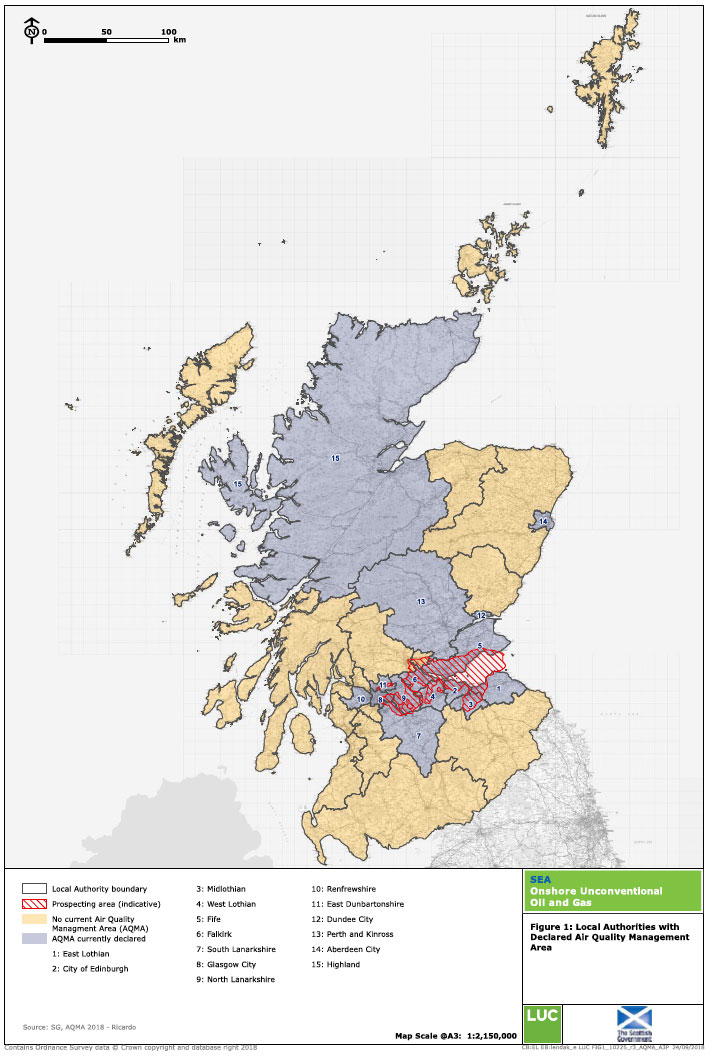
Figure 2a: Water Condition in Scotland
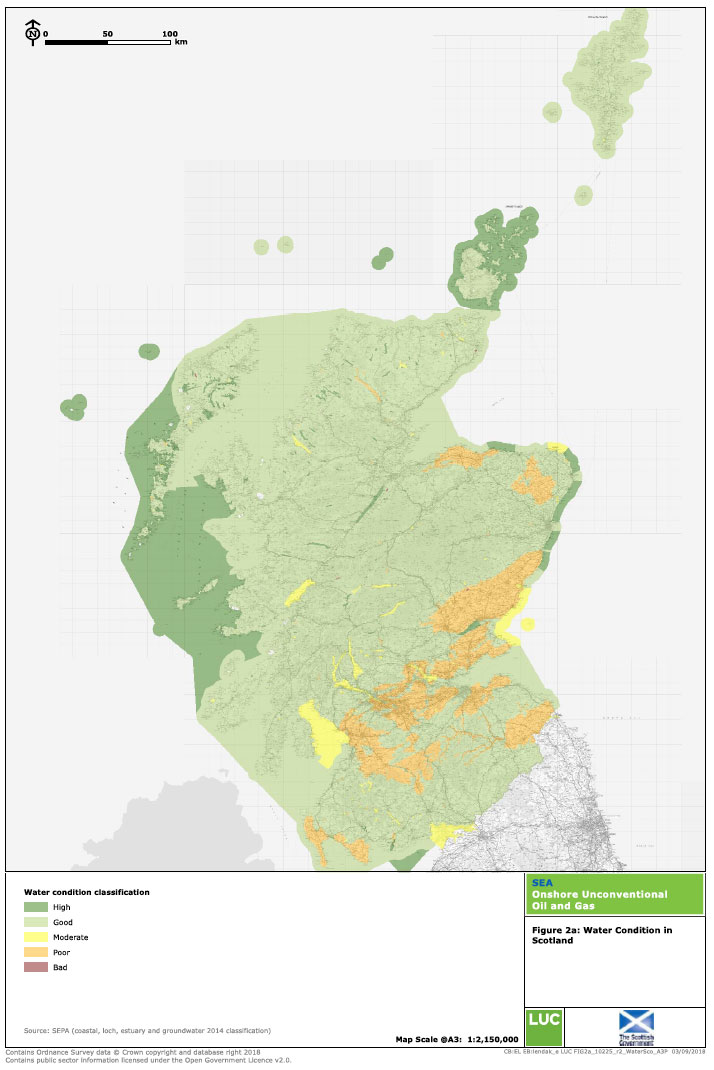
Figure 2b: Water Condition within Indicative Prospecting Area
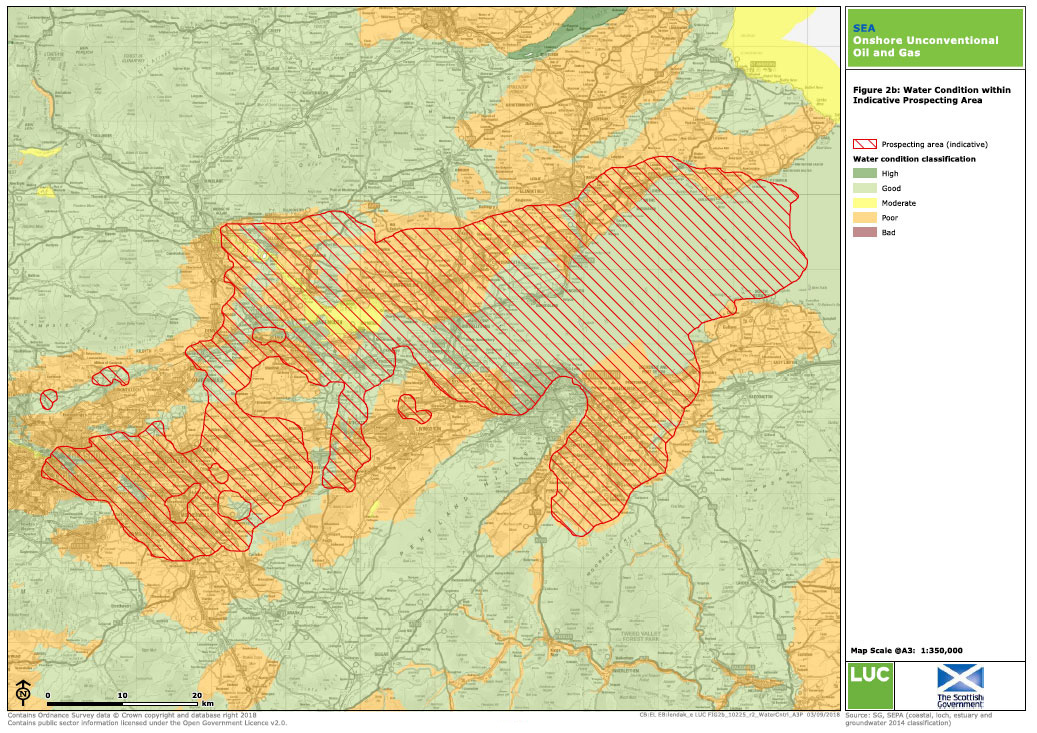
Figure 3a: Natural Heritage in Scotland
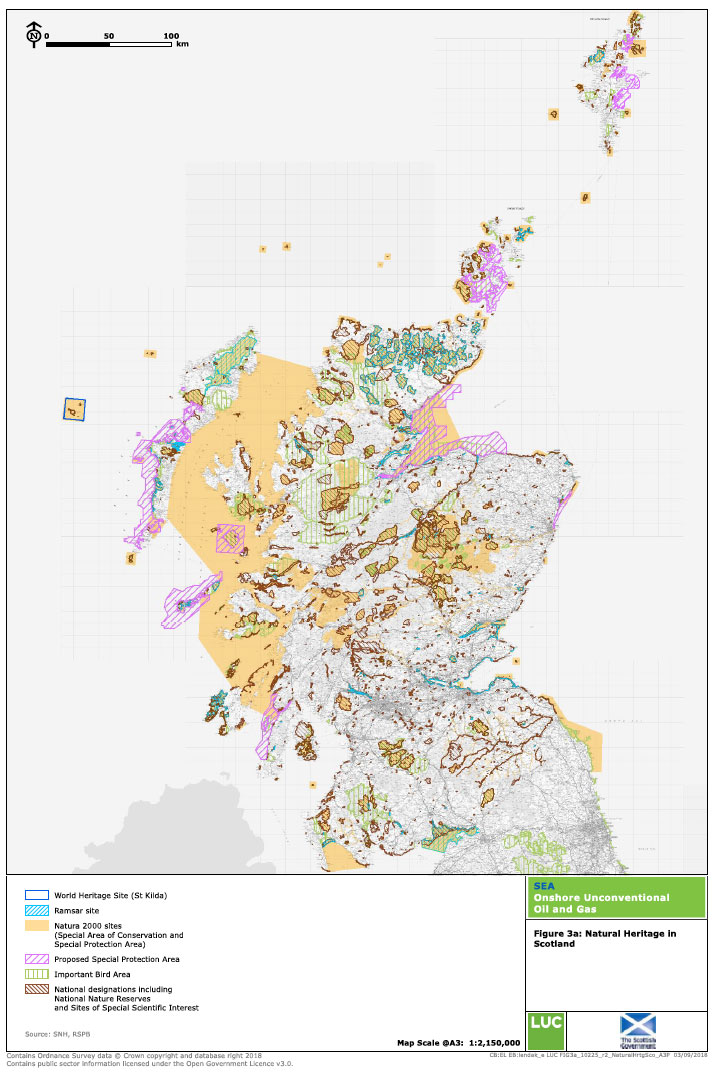
Figure 3b: Natural Heritage within Indicative Prospecting Area
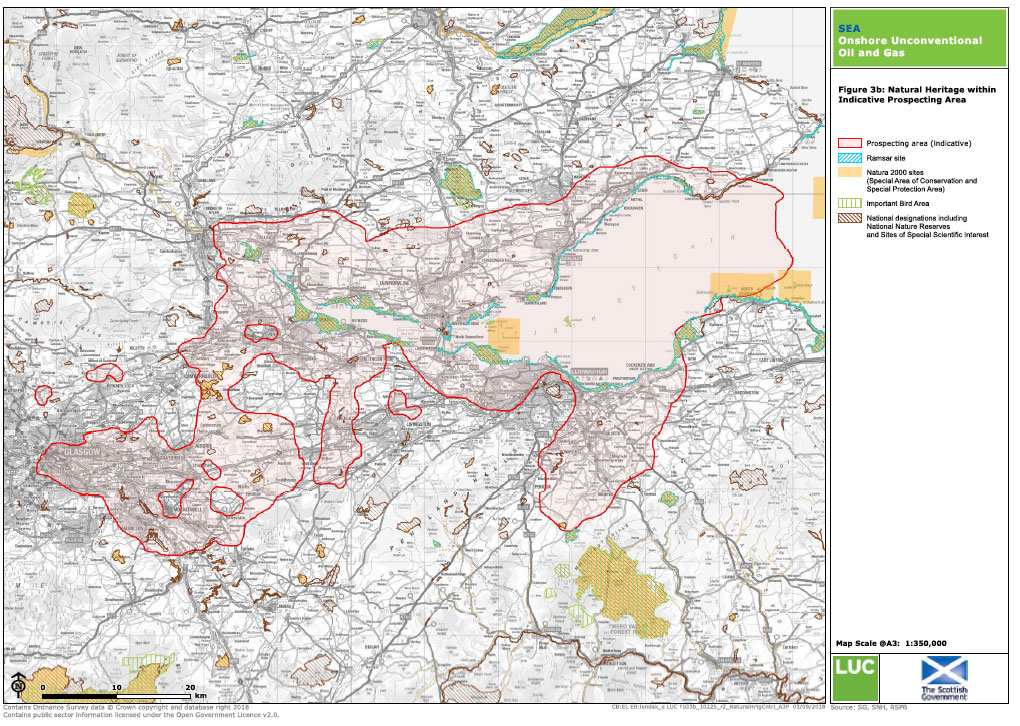
Figure 4a: Overall Deprivation in Scotland
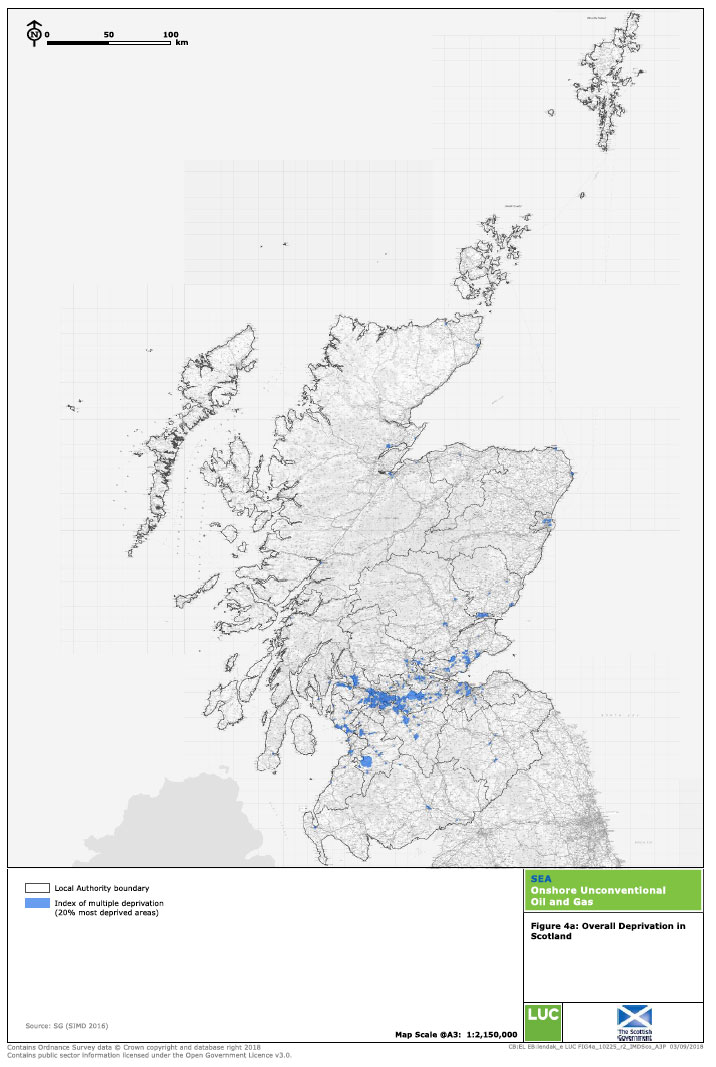
Figure 4b: Overall Deprivation within Indicative Prospecting Area
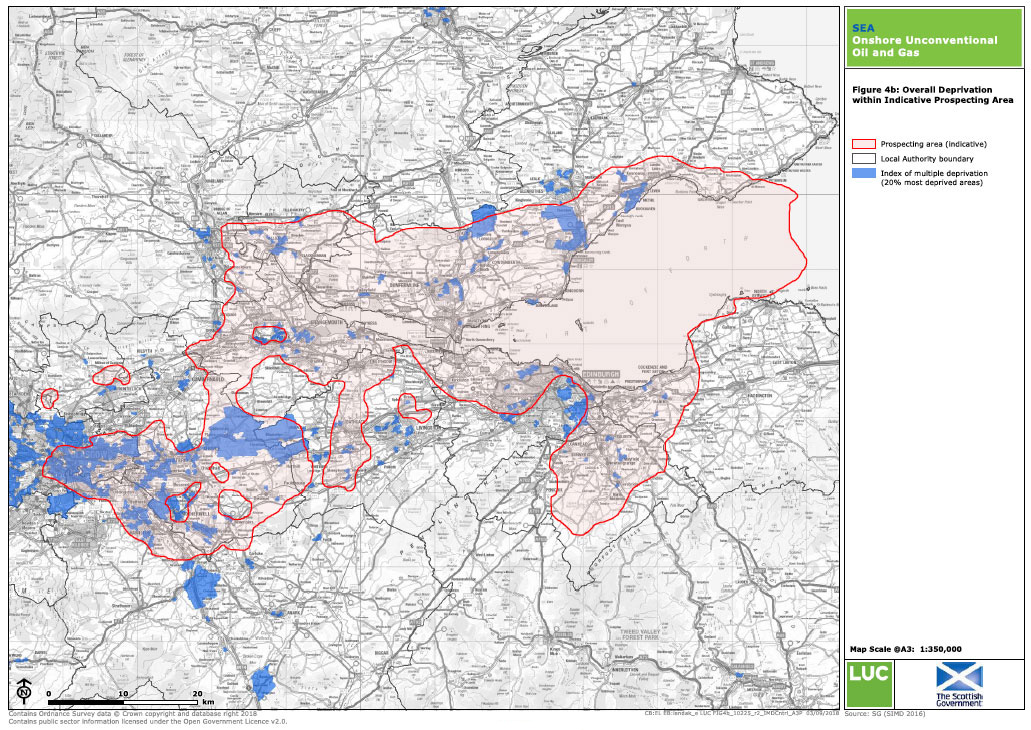
Figure 5a: Health Deprivation in Scotland
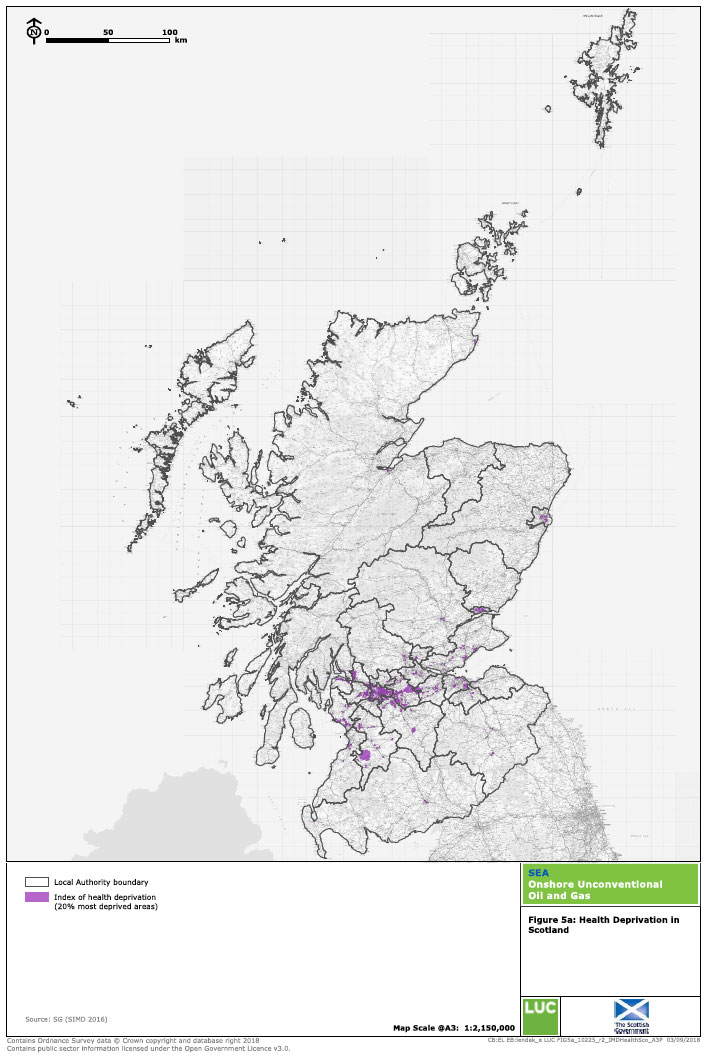
Figure 5b: Health Deprivation within Indicative Prospecting Area
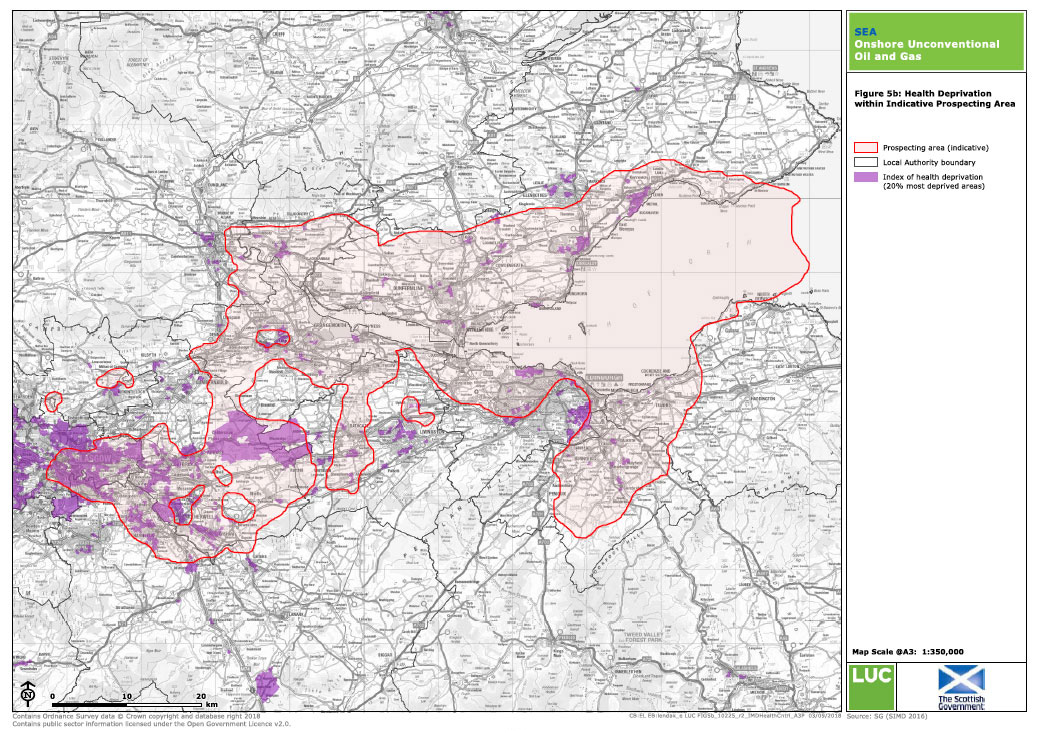
Figure 6a: Recreational Routes in Scotland
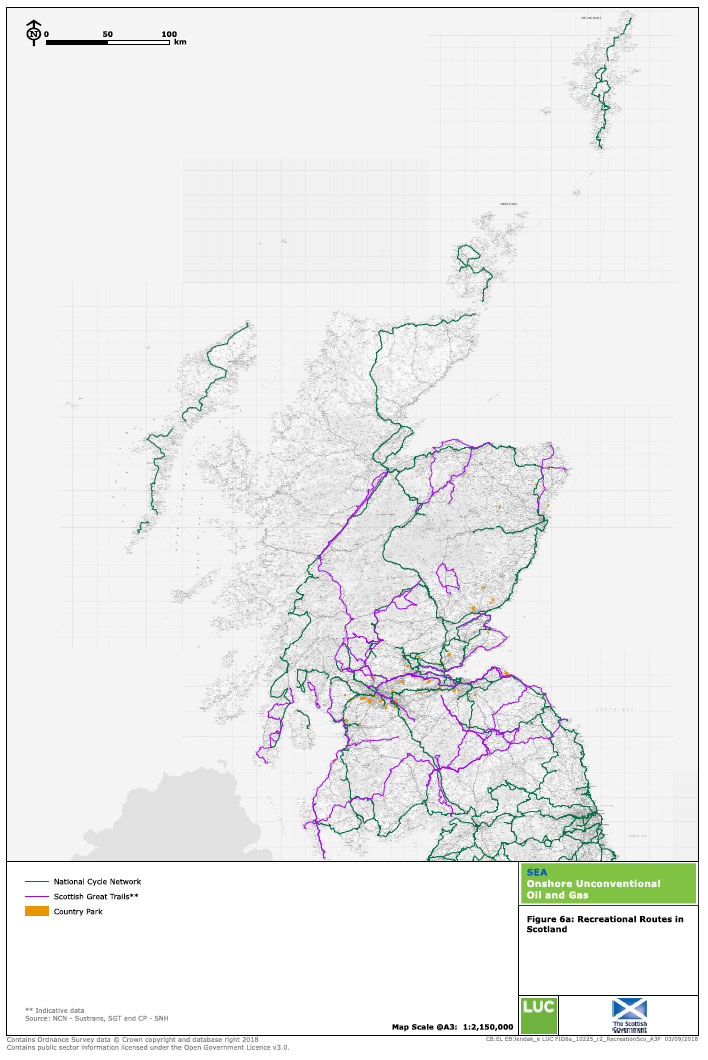
Figure 6b: Recreational Routes within Indicative Prospecting Area
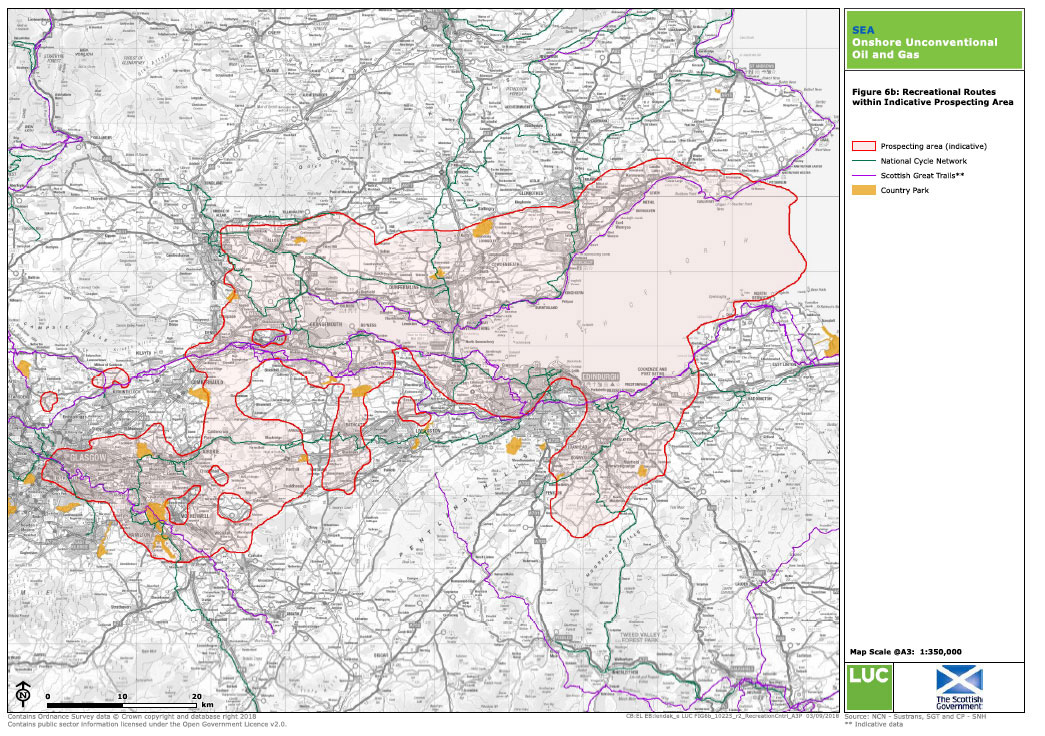
Figure 7a: Land Capability for Agriculture in Scotland
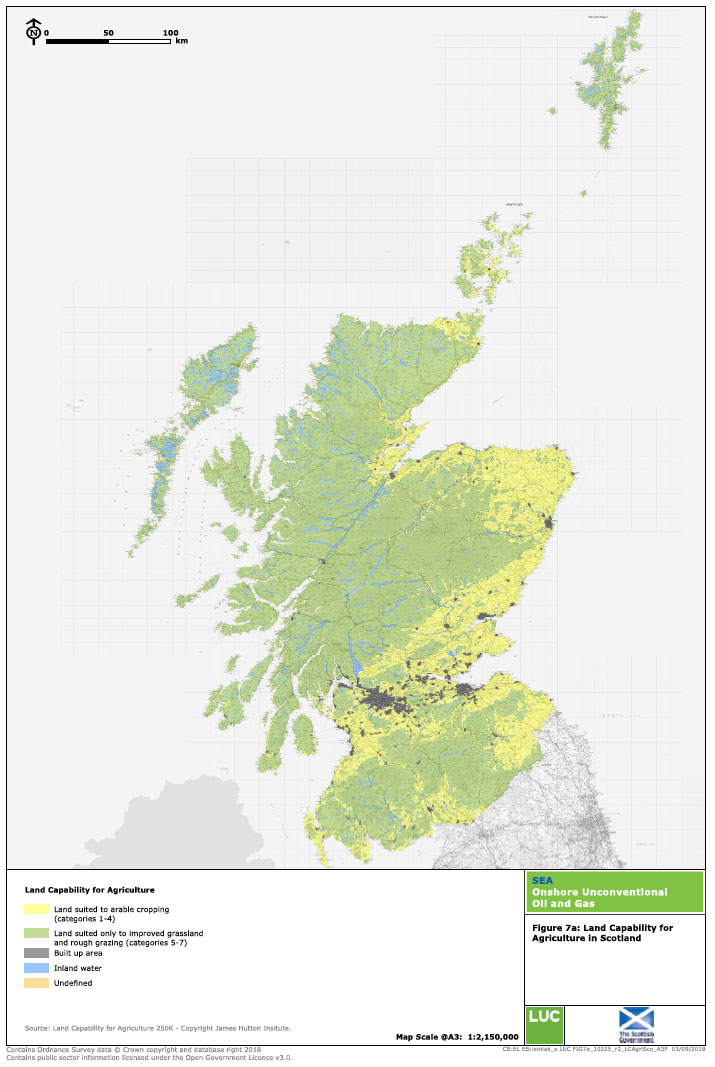
Figure 7b: Land Capability for Agriculture within Indicative Prospecting Area
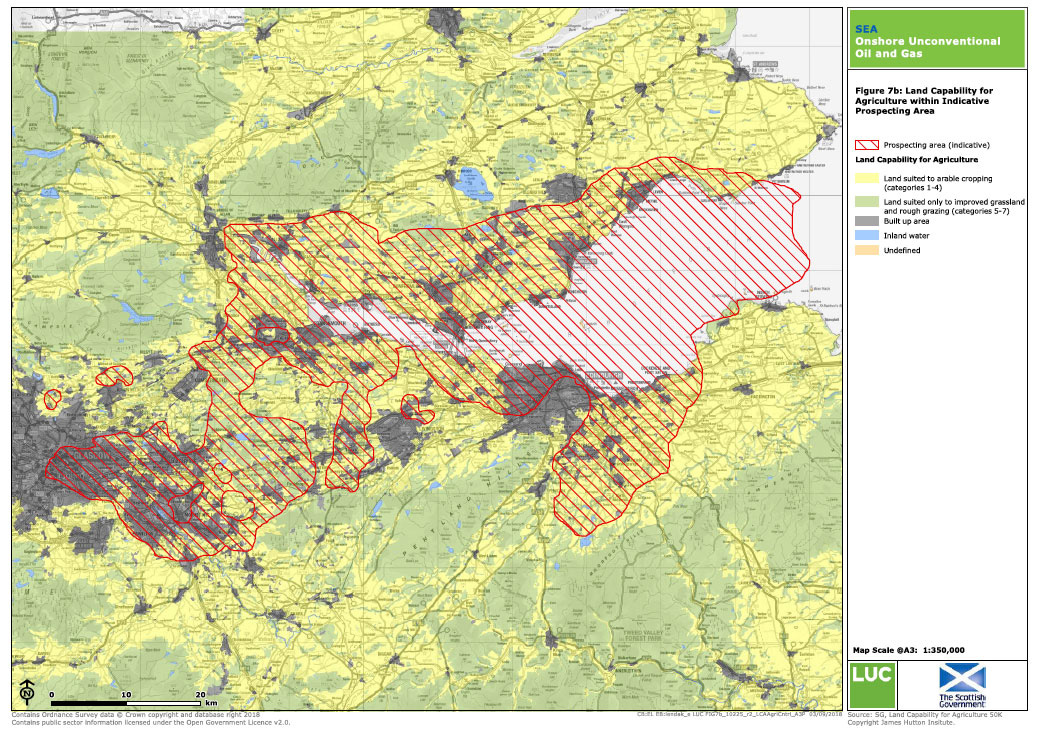
Figure 8a: Top Soil Organic Carbon Concentration in Scotland
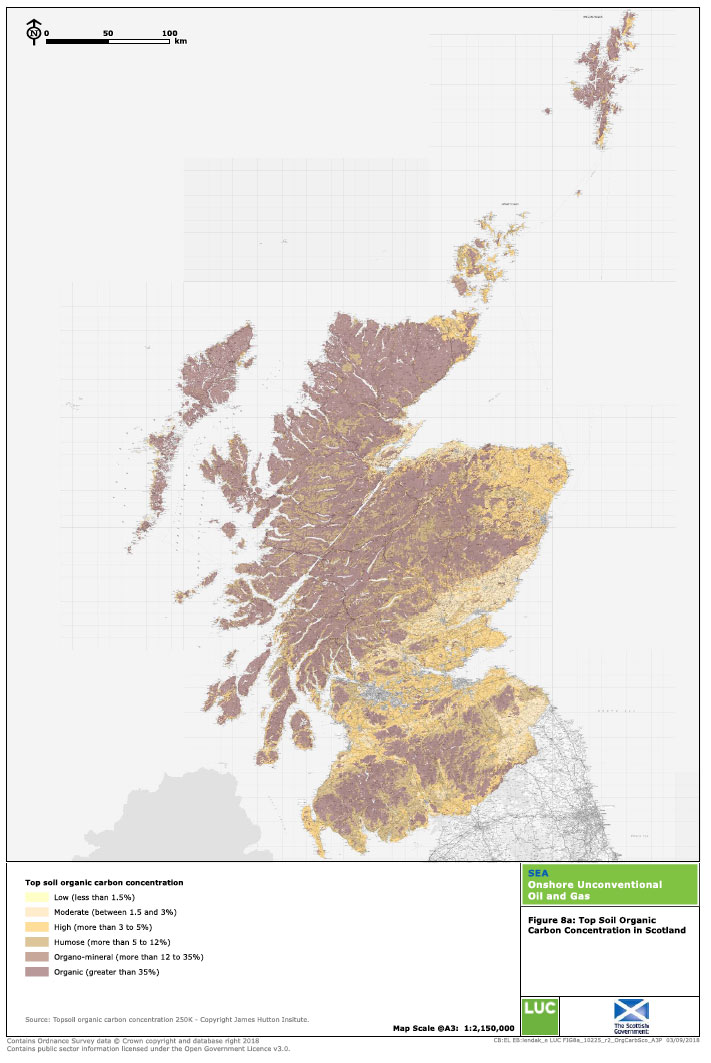
Figure 8b: Top Soil Organic Carbon Concentration within Indicative Prospecting Area
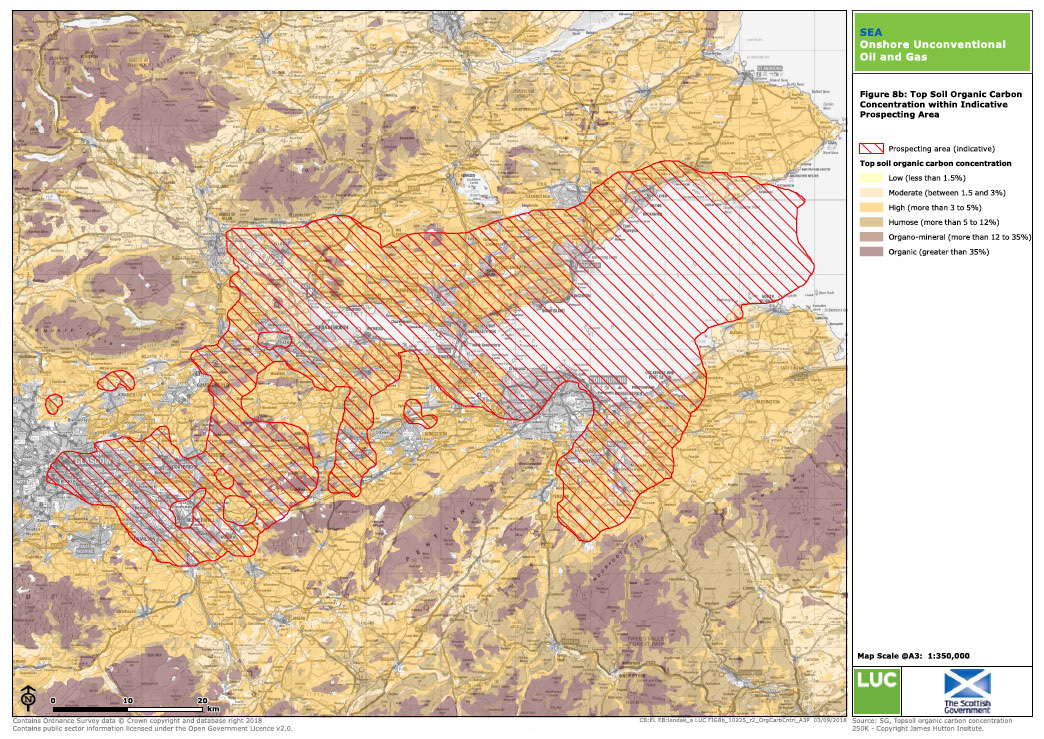
Figure 9a: Cultural Heritage in Scotland
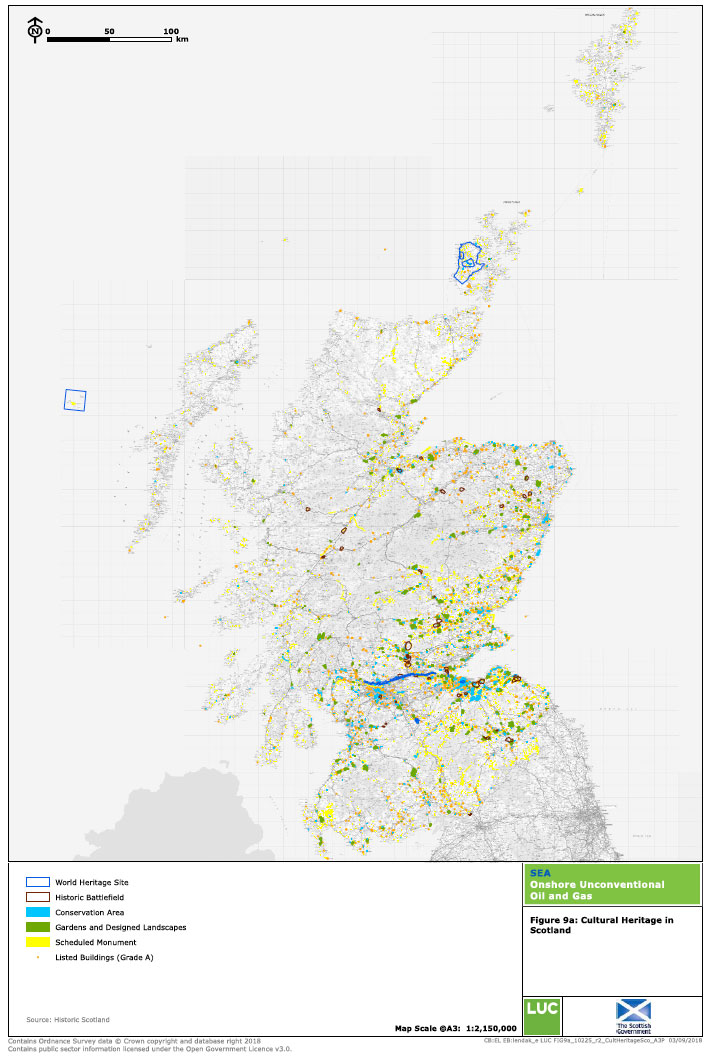
Figure 9b: Cultural Heritage within Indicative Prospecting Area
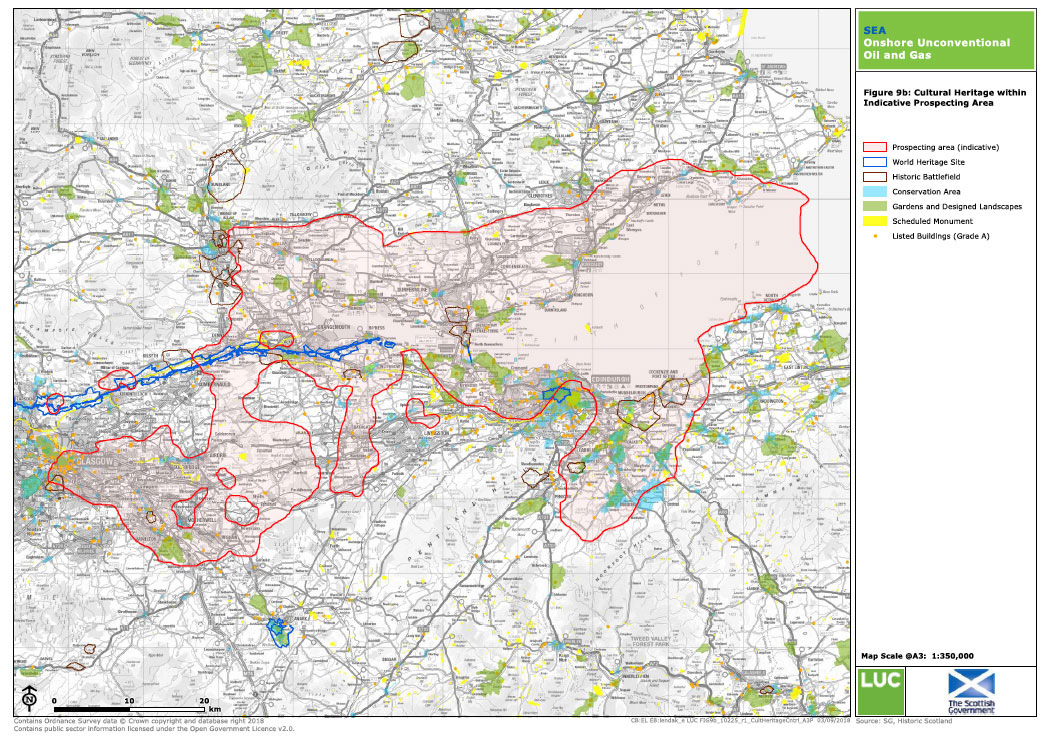
Figure 10: Designated Landscape in Scotland
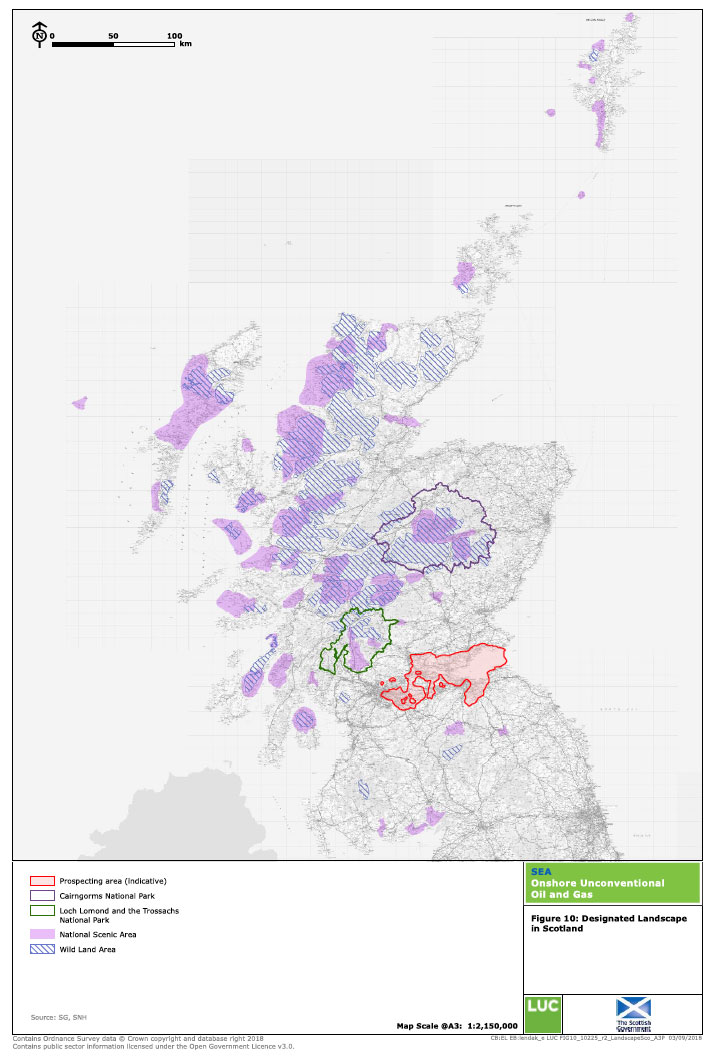
Contact
Email: Onshore Oil and Gas Team
There is a problem
Thanks for your feedback